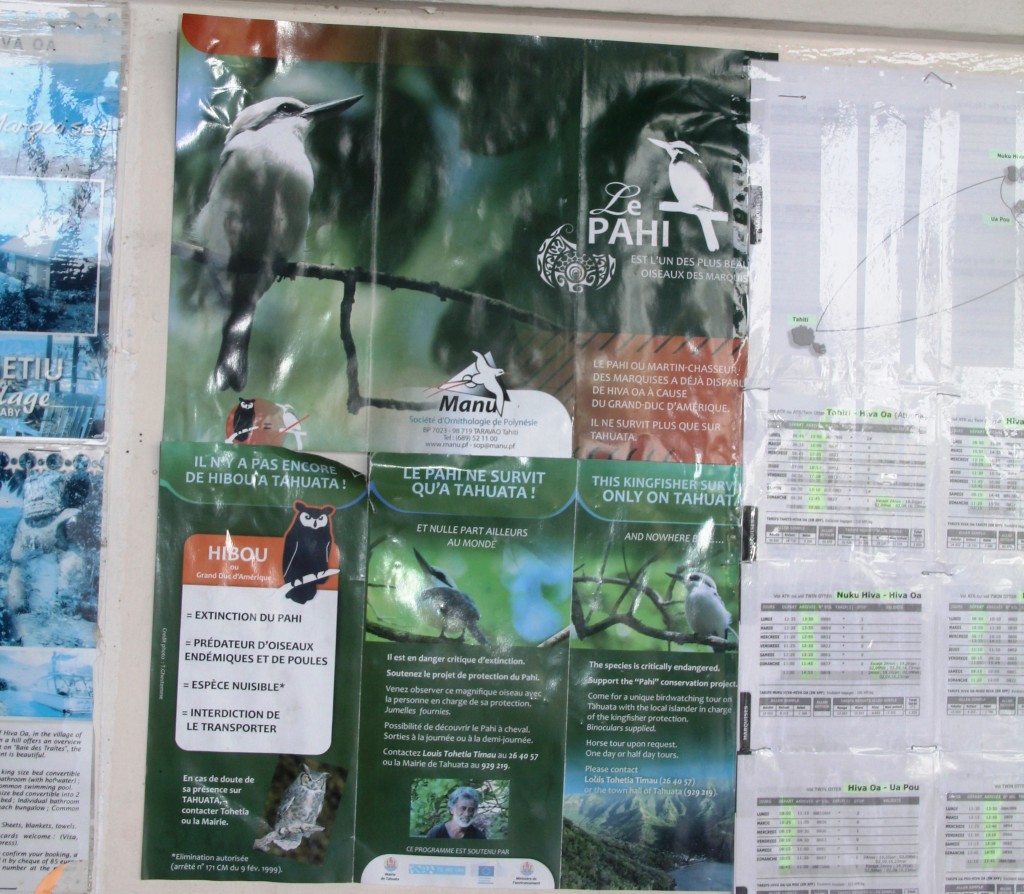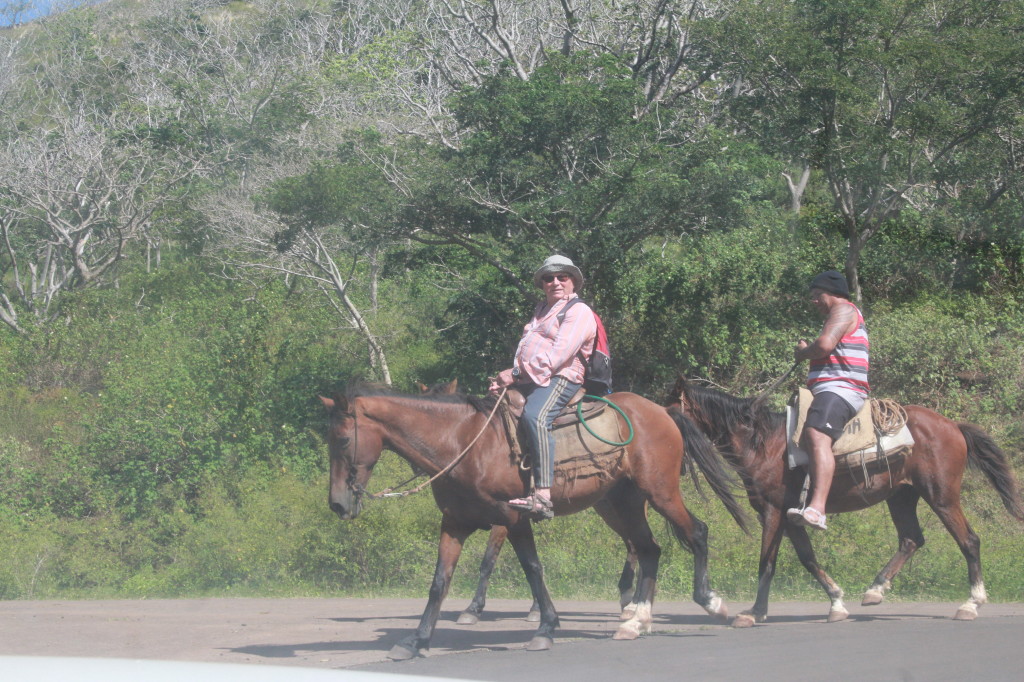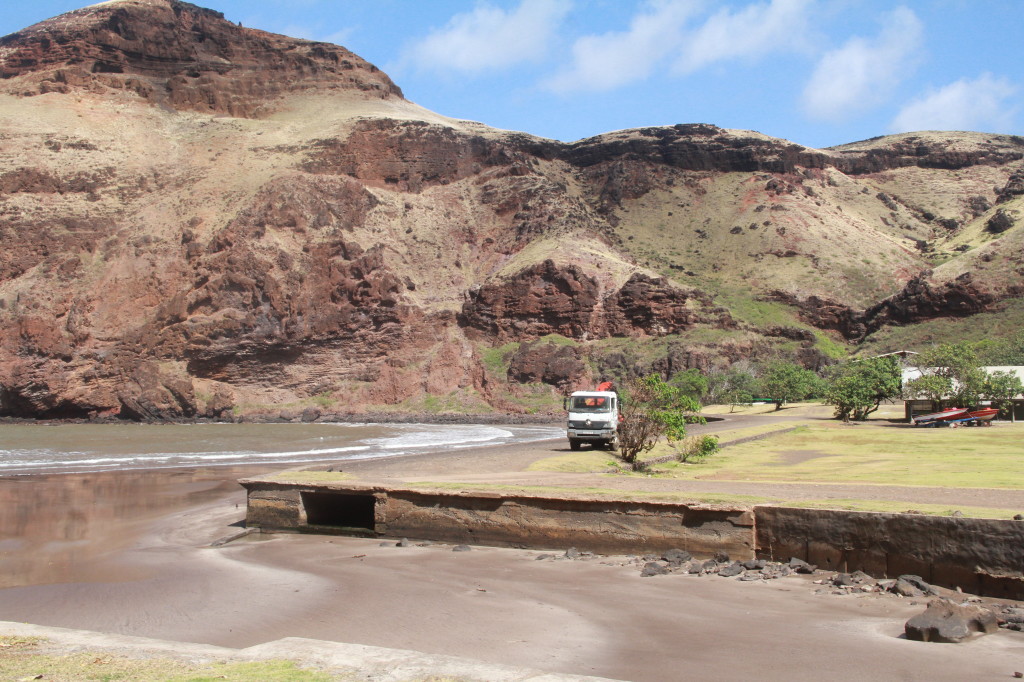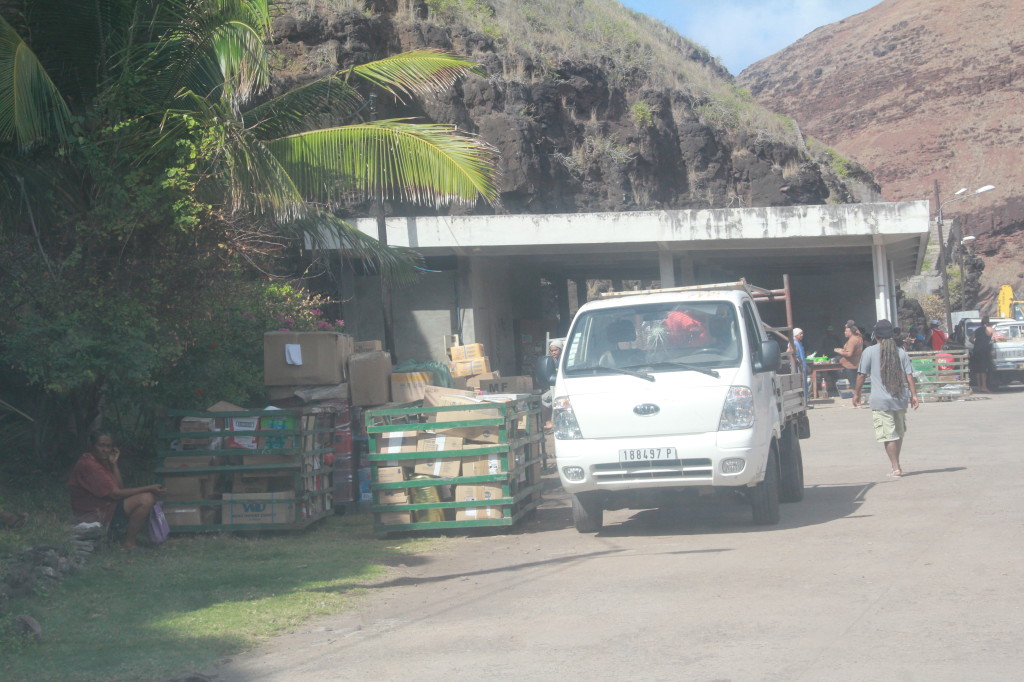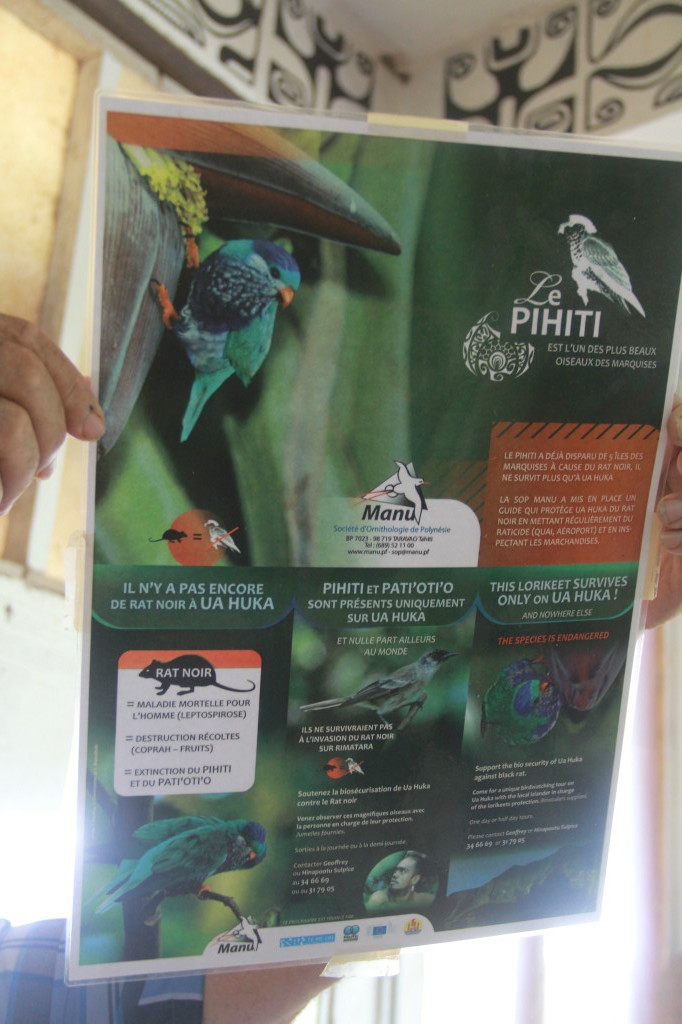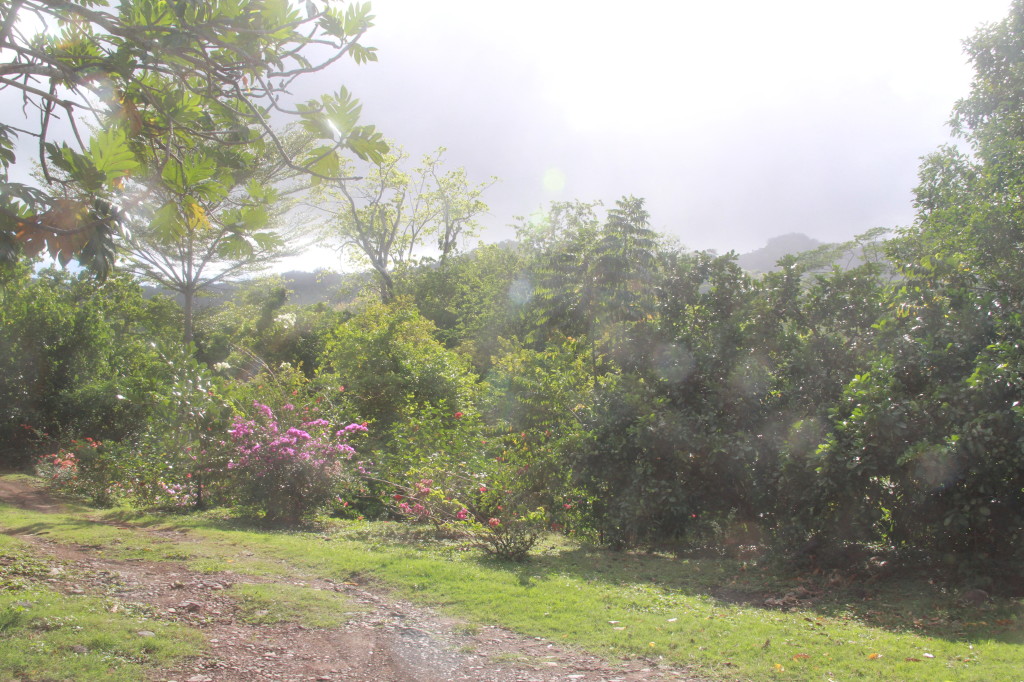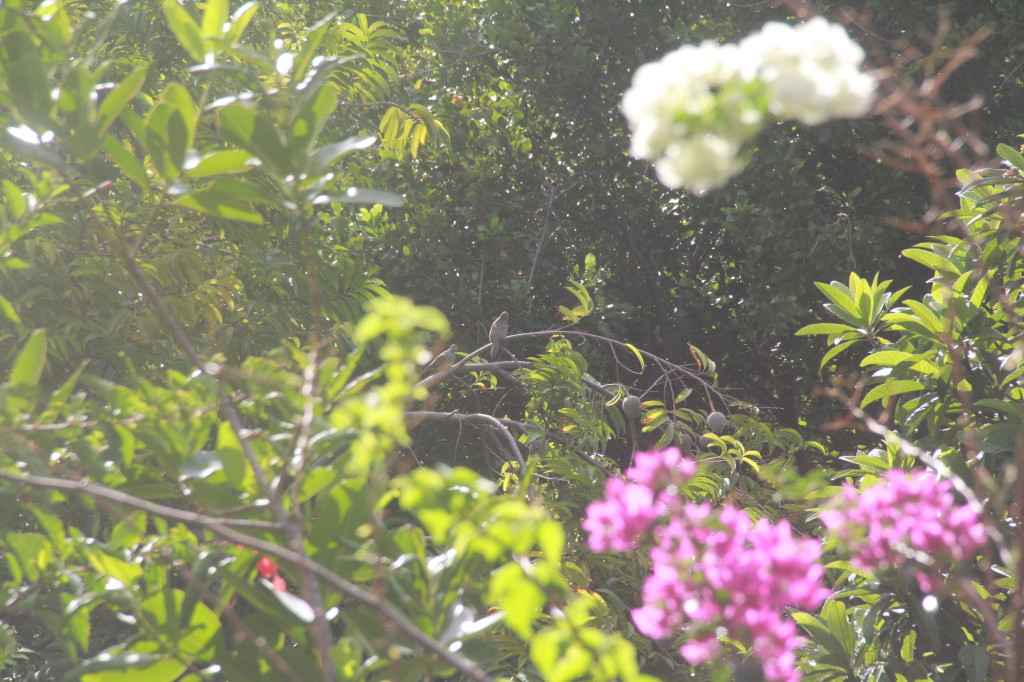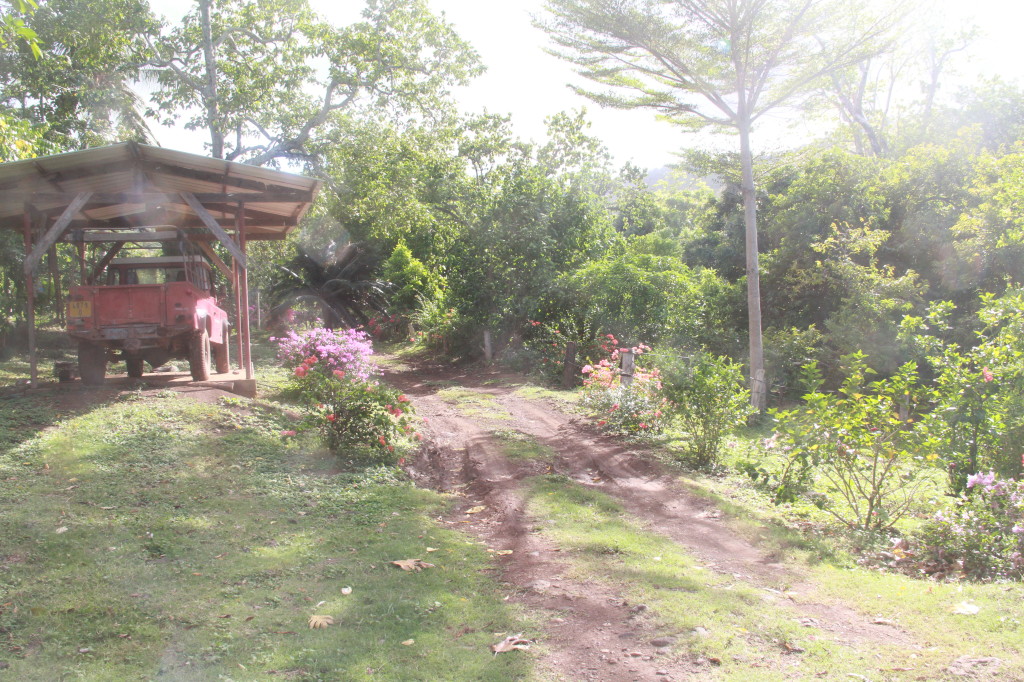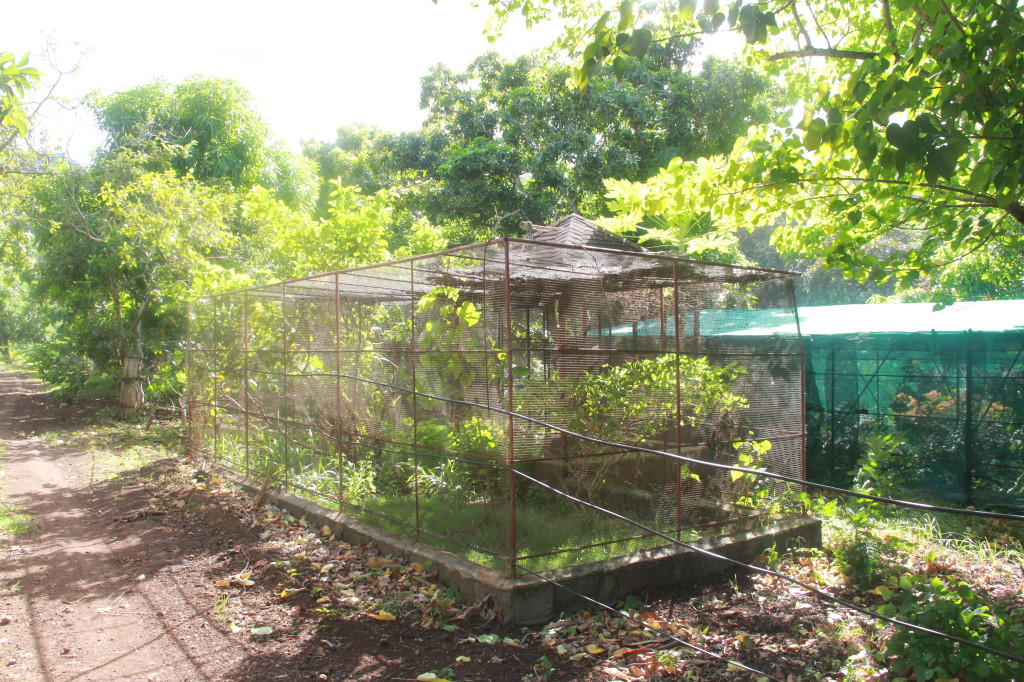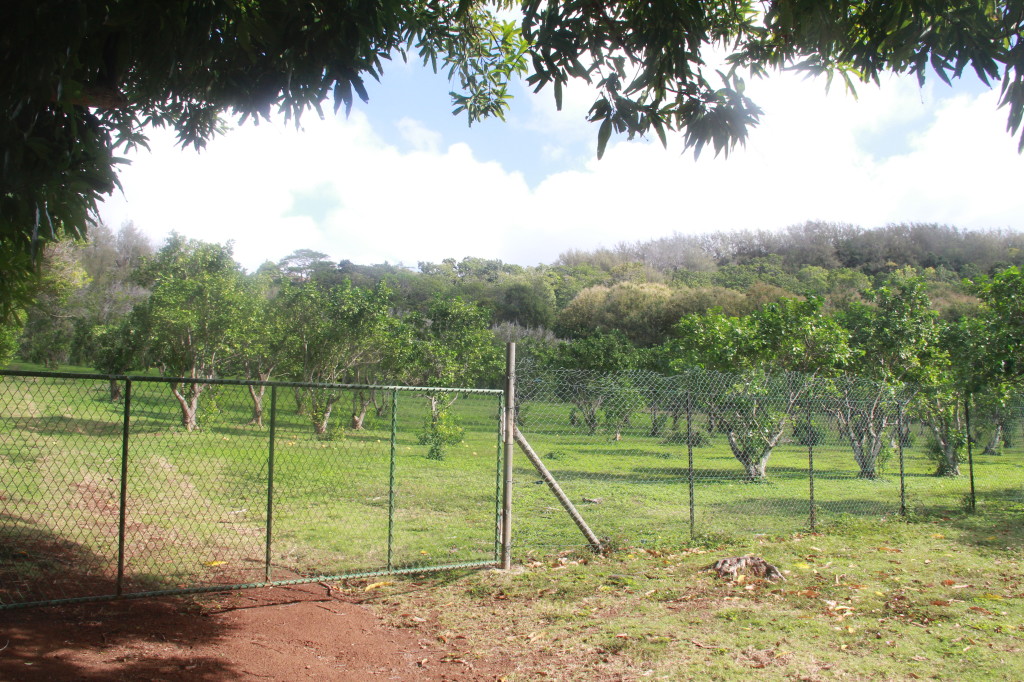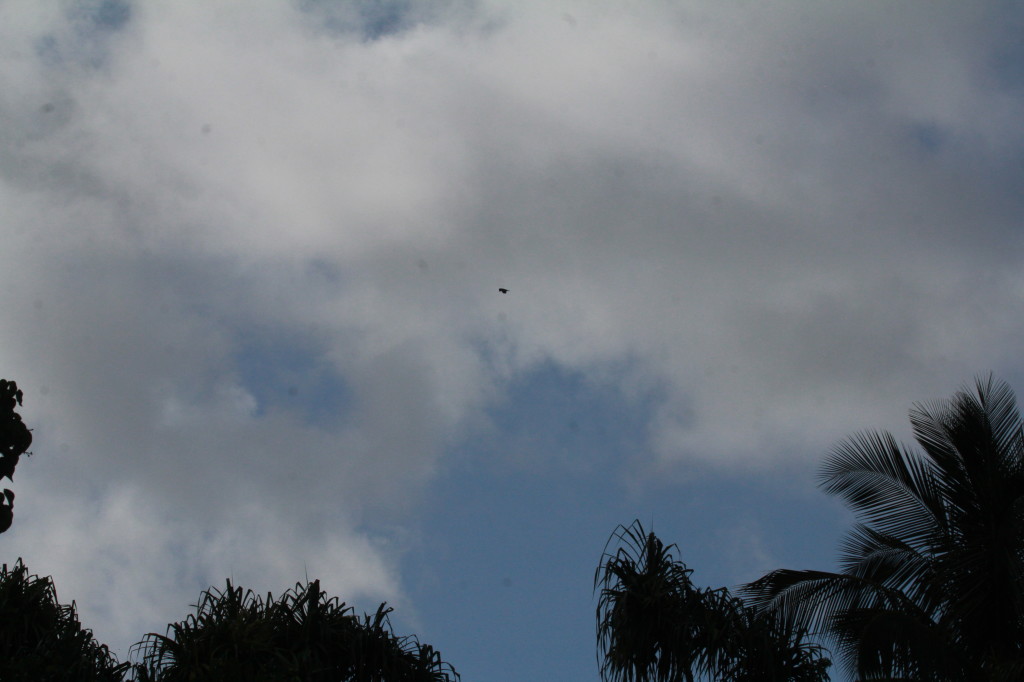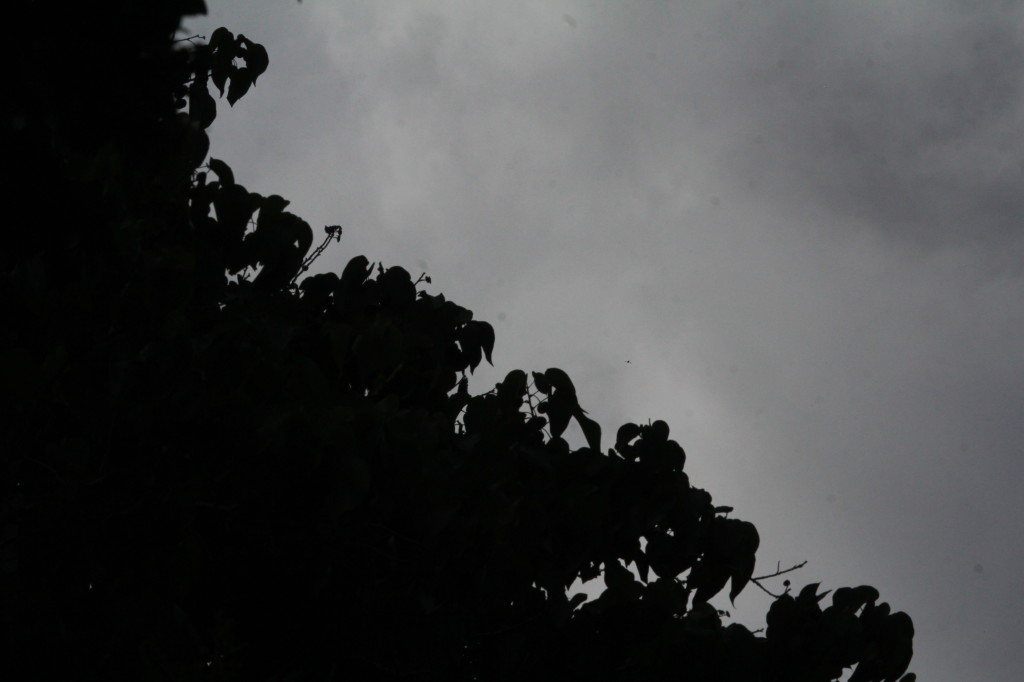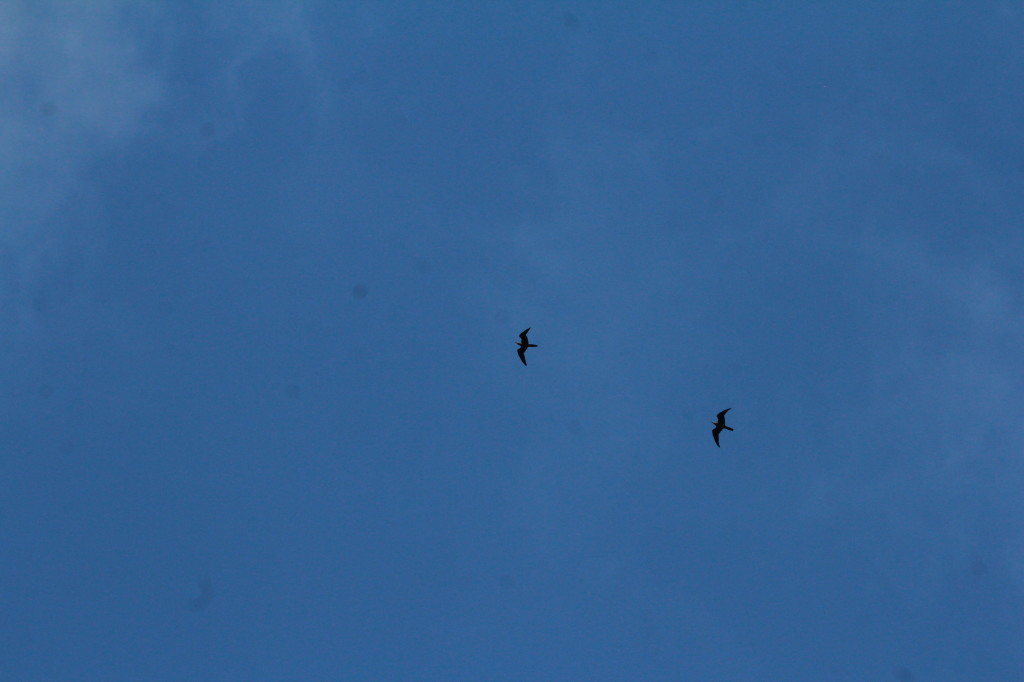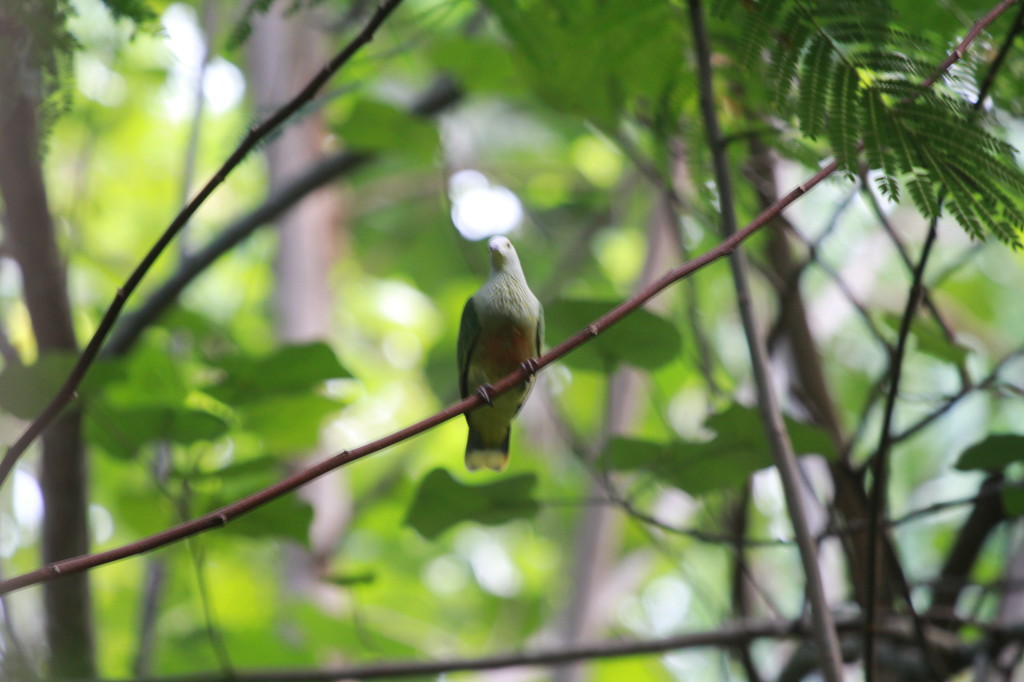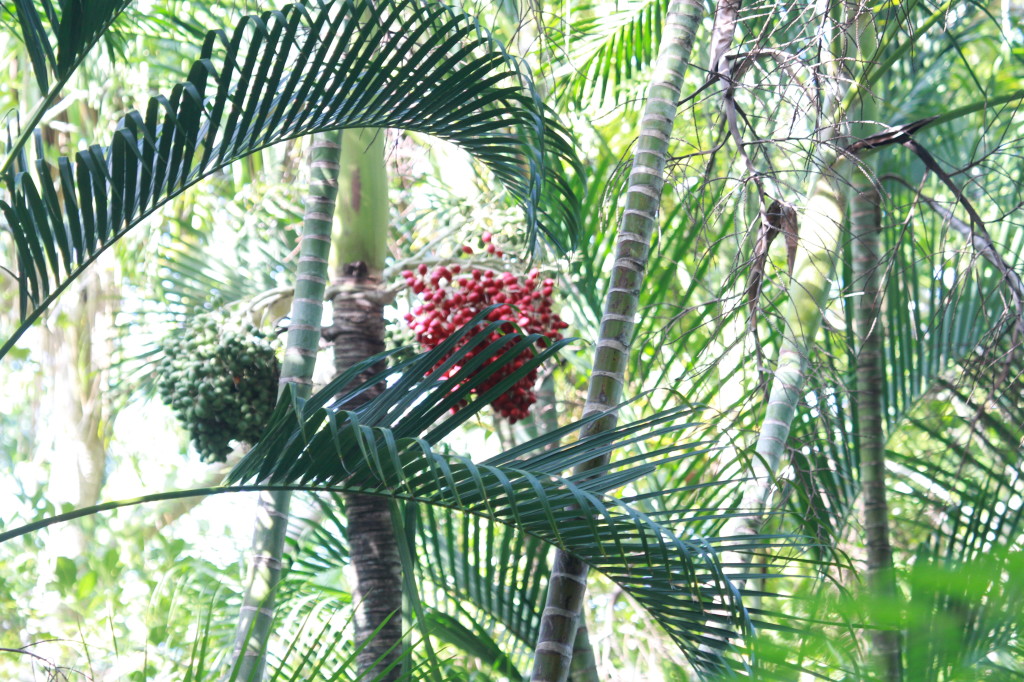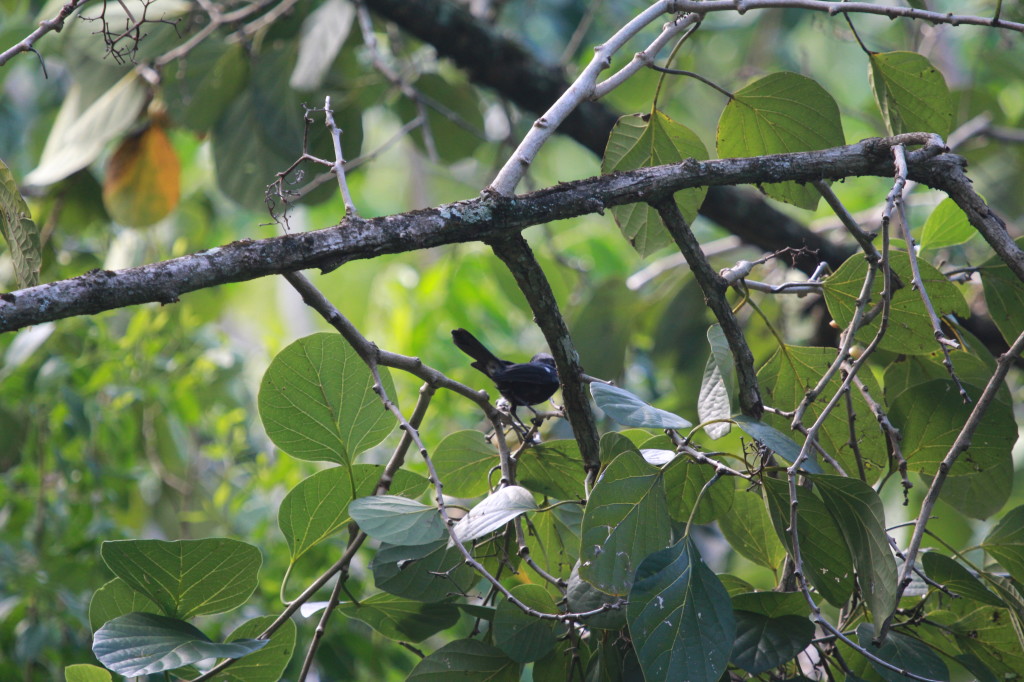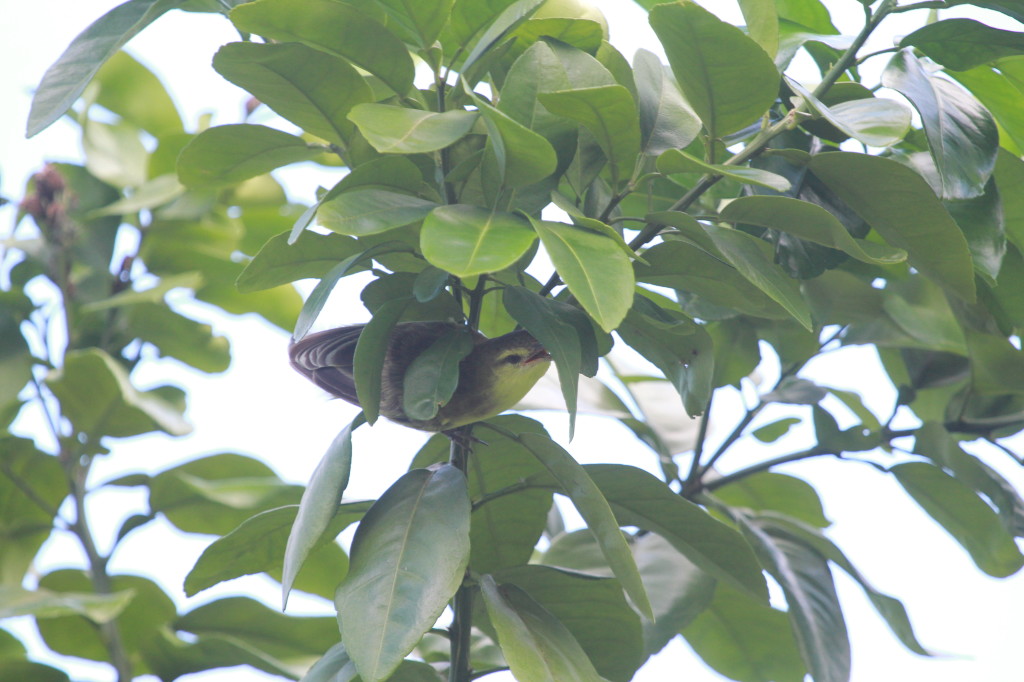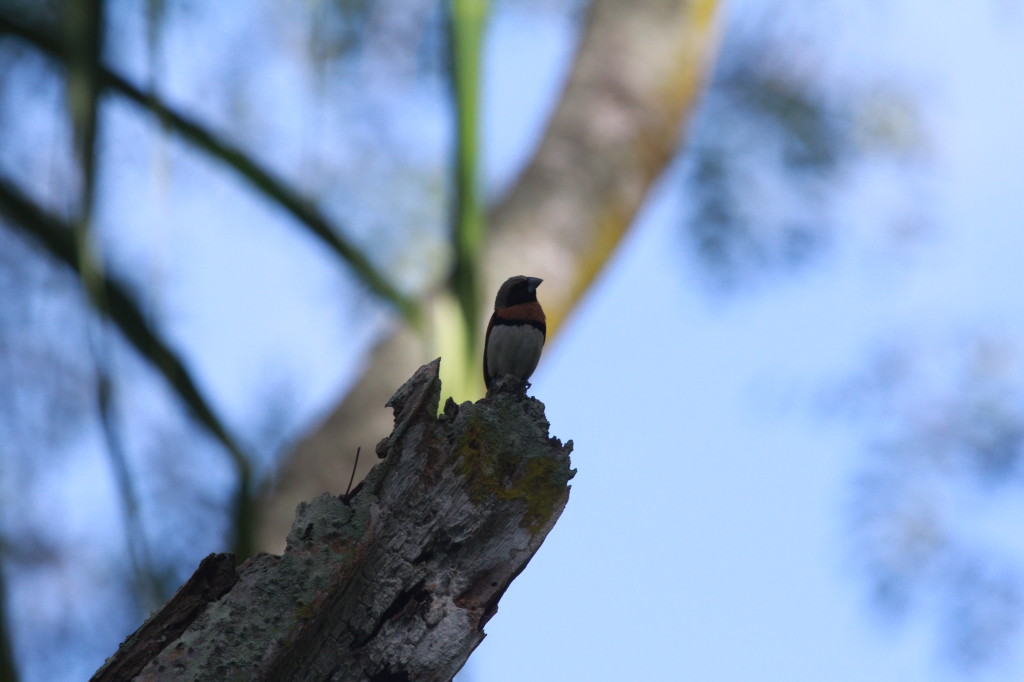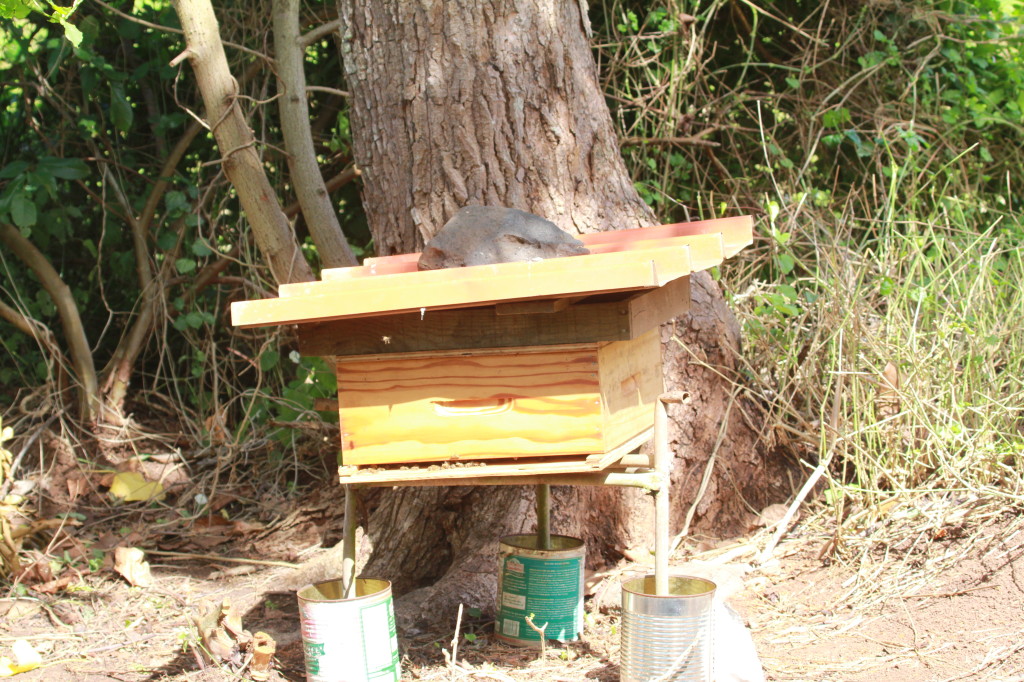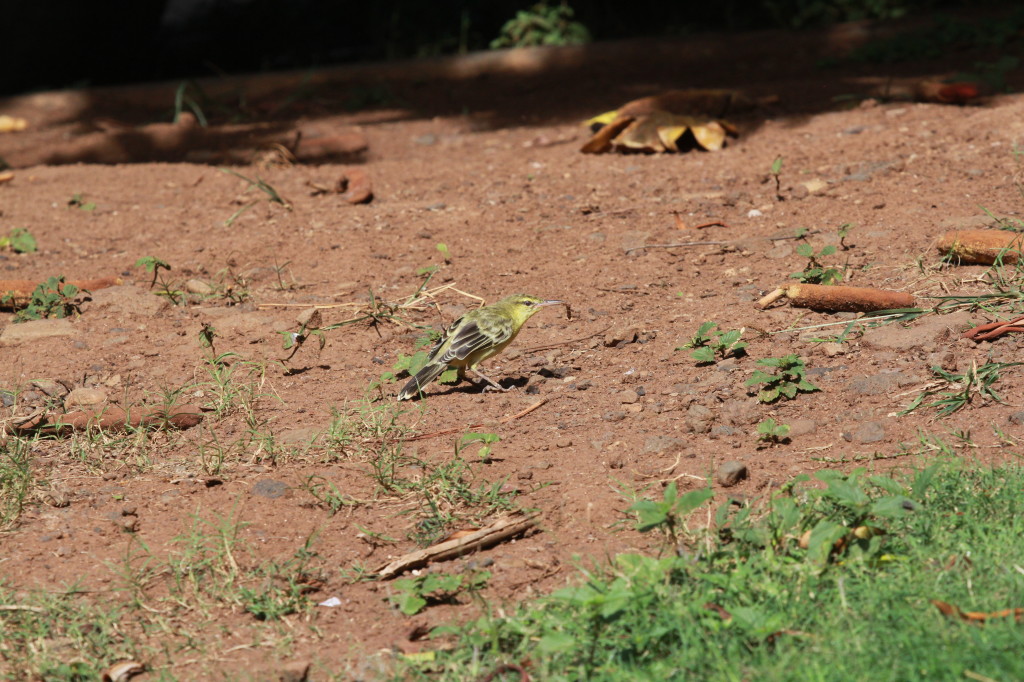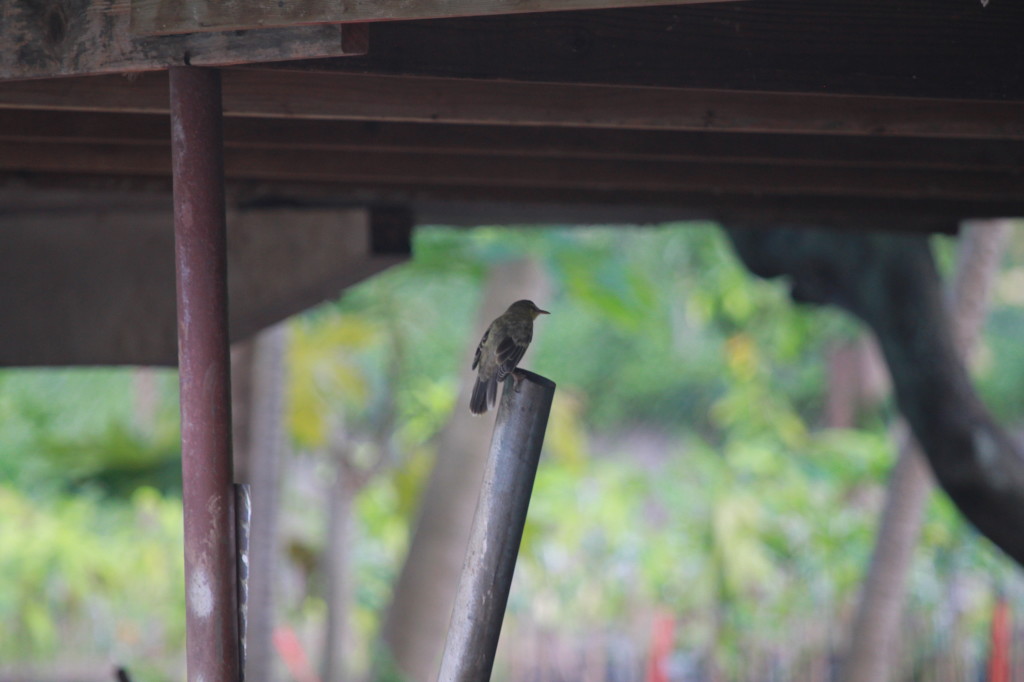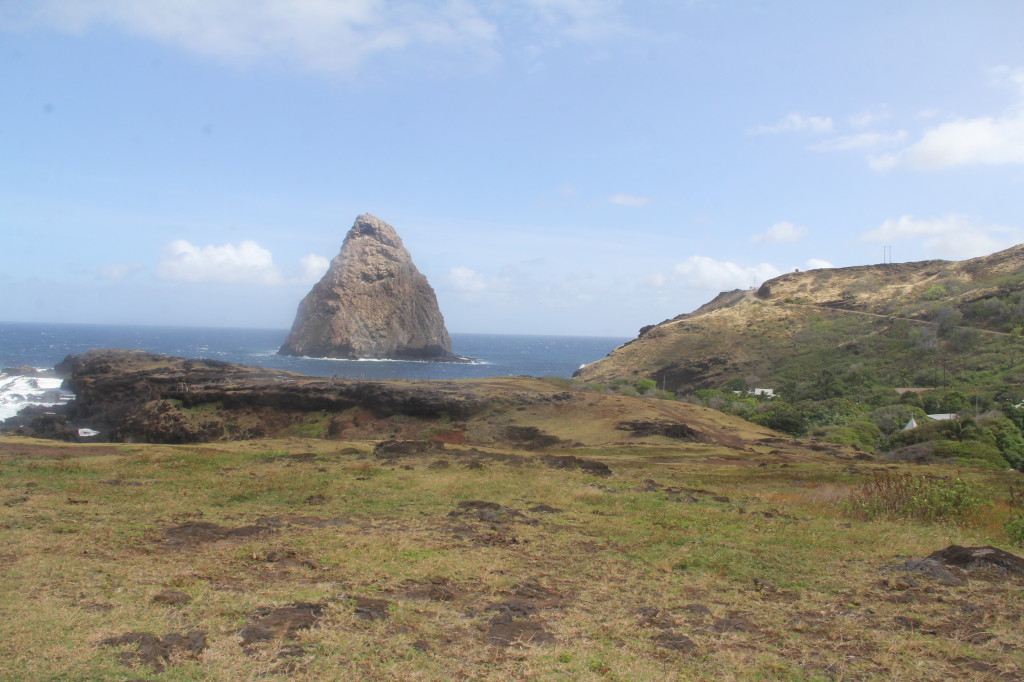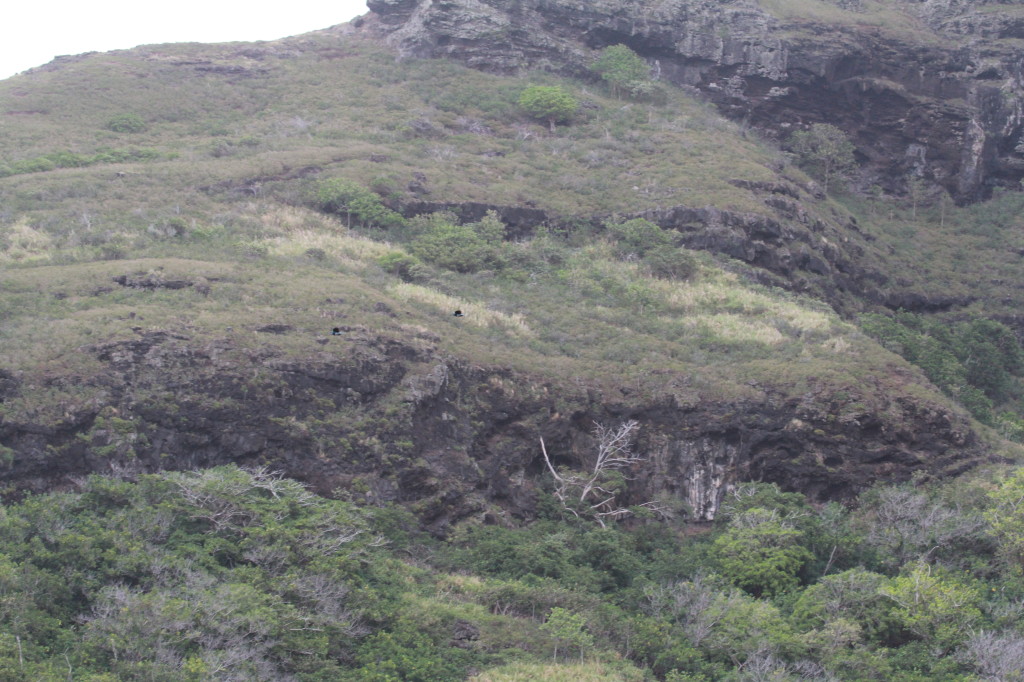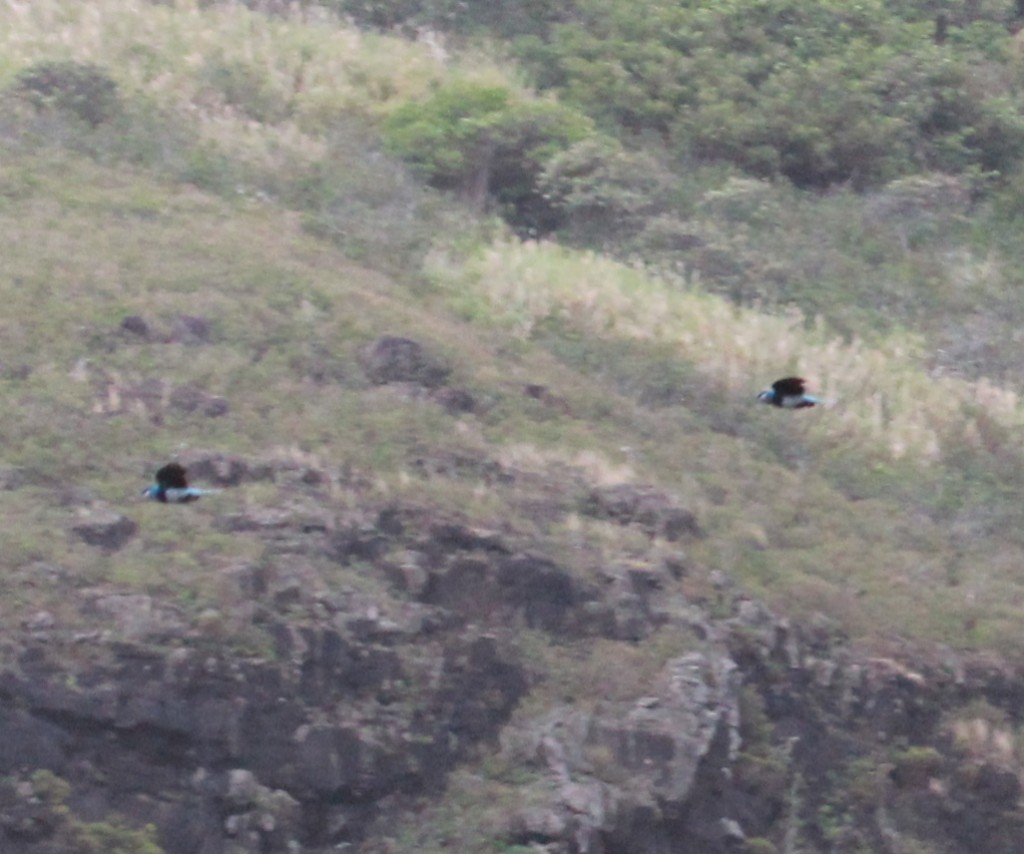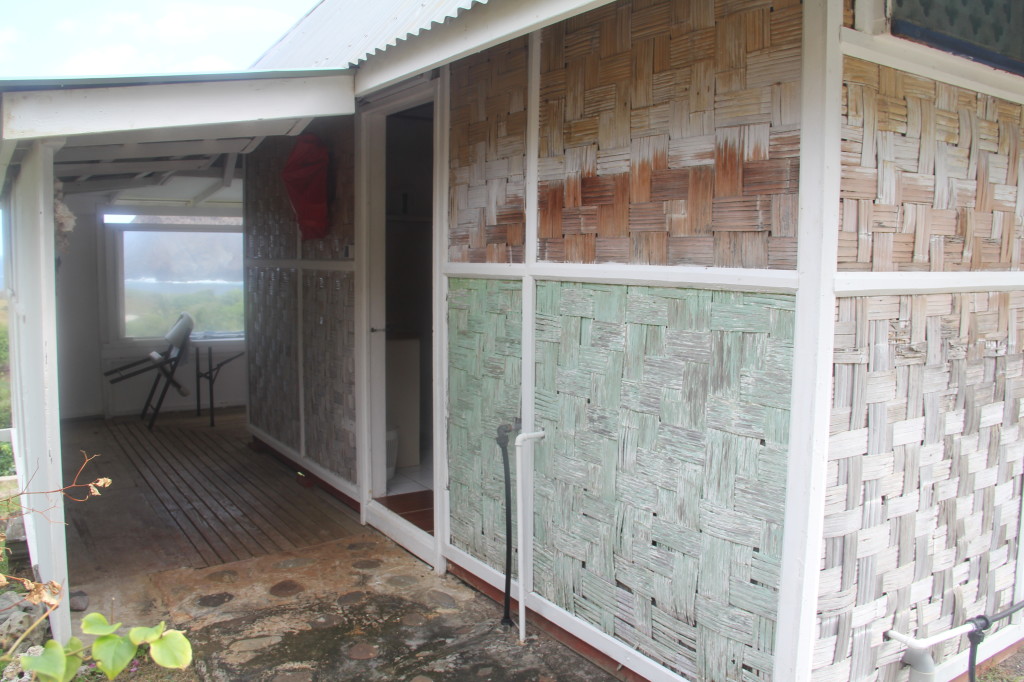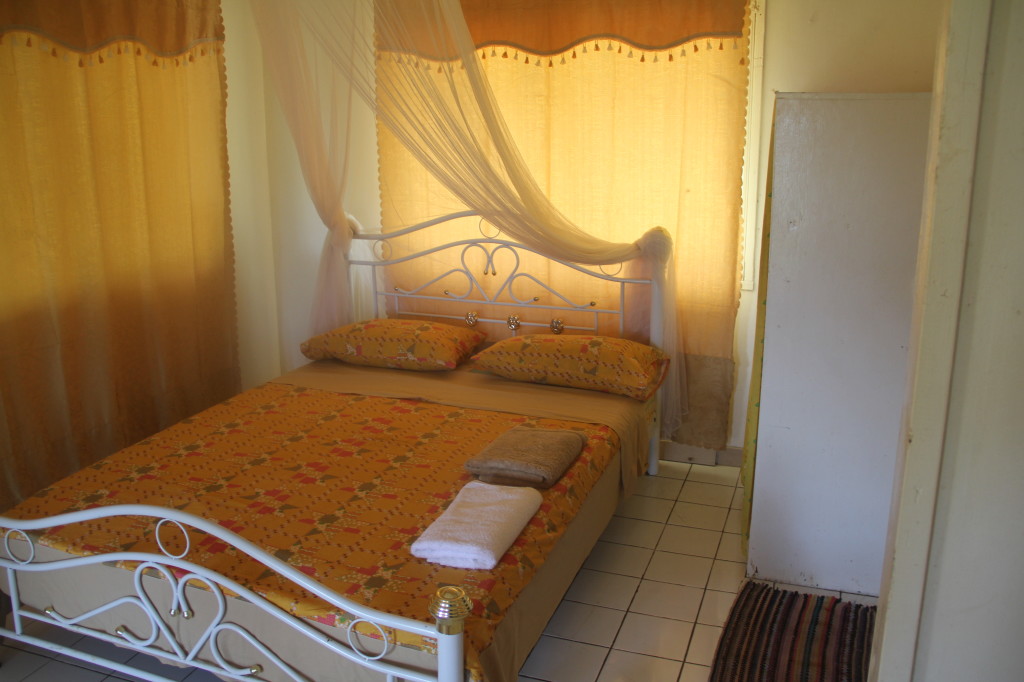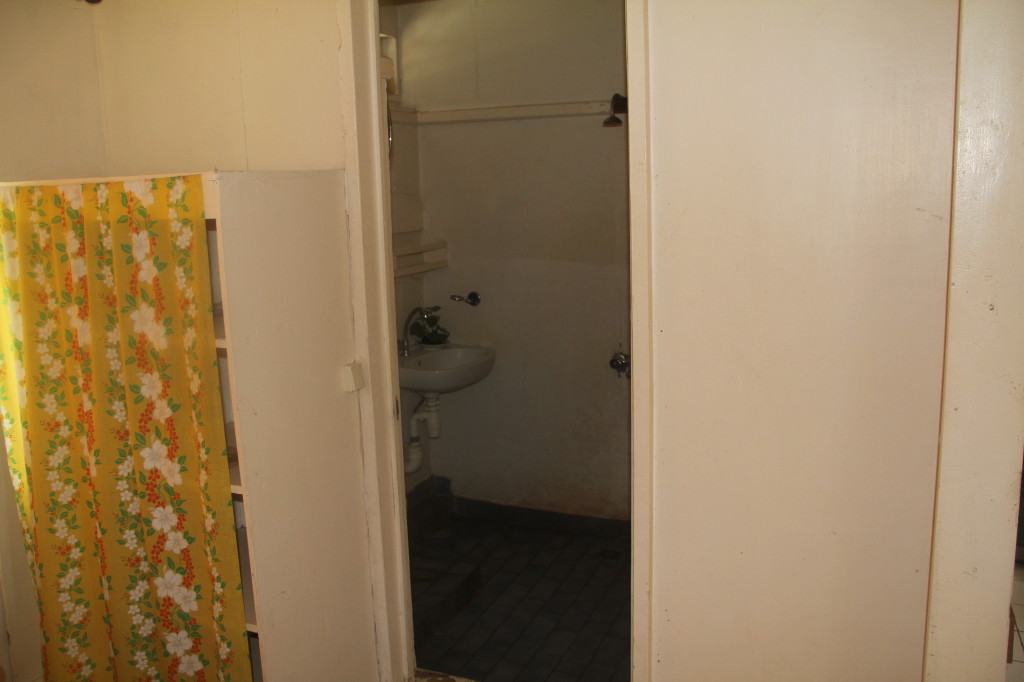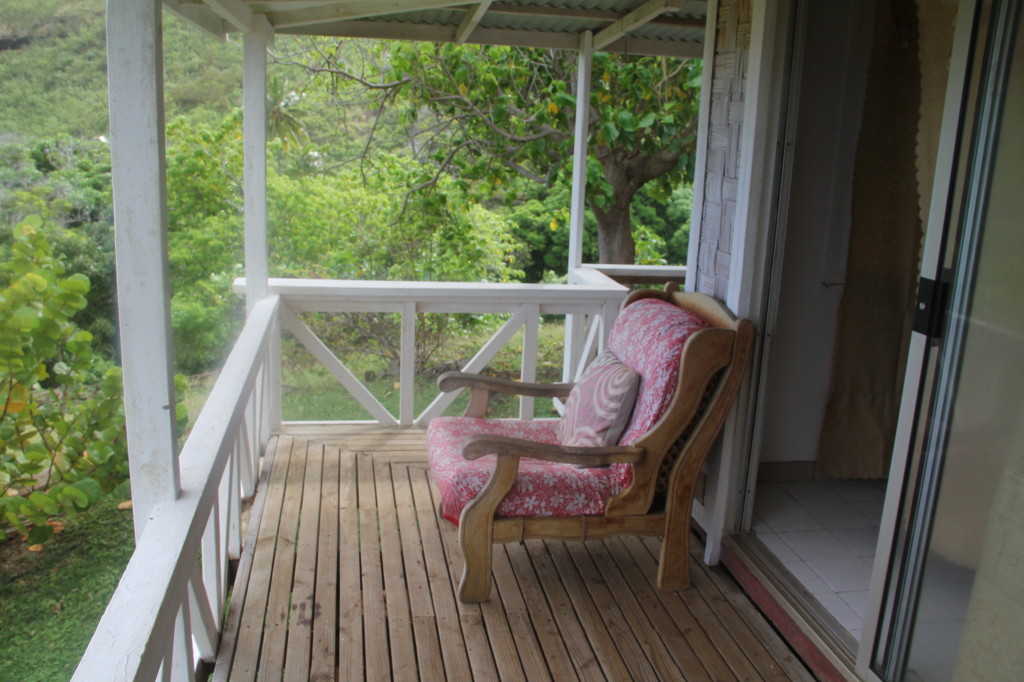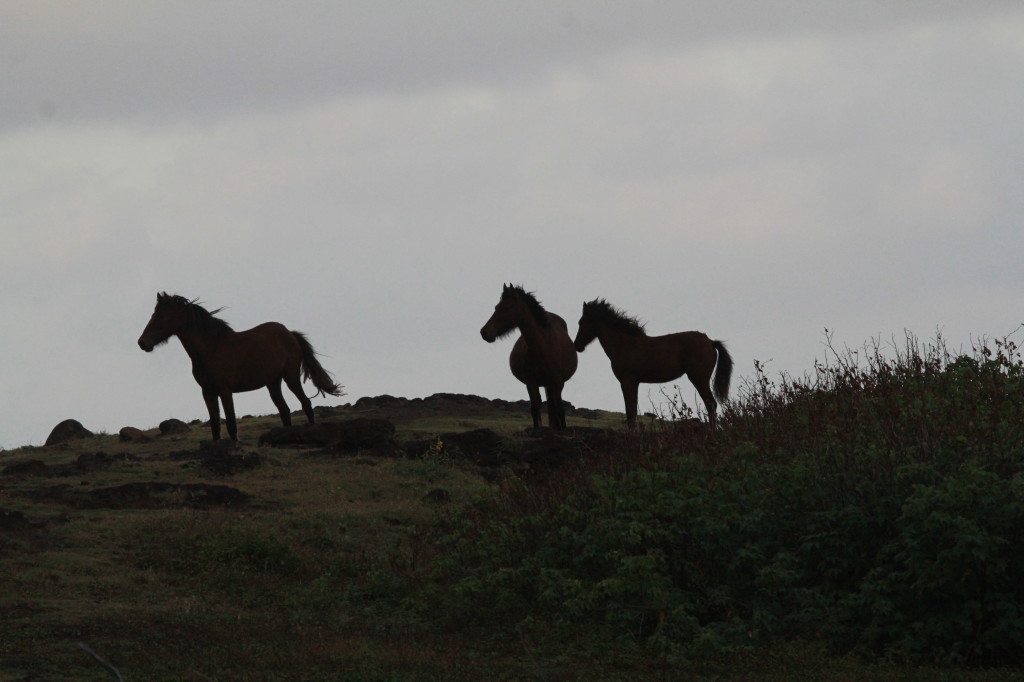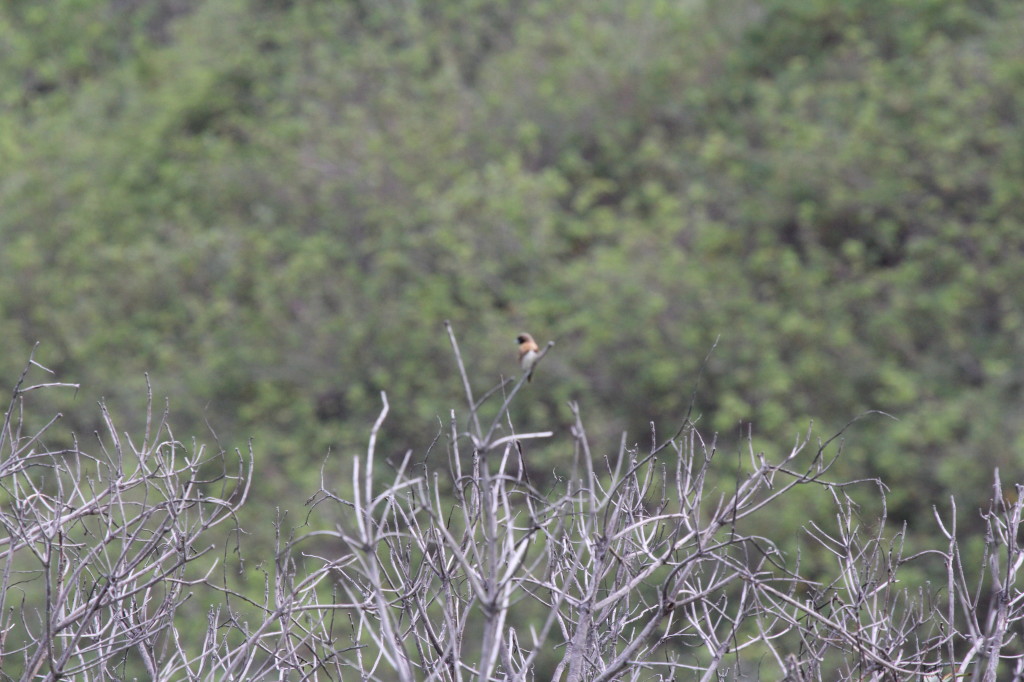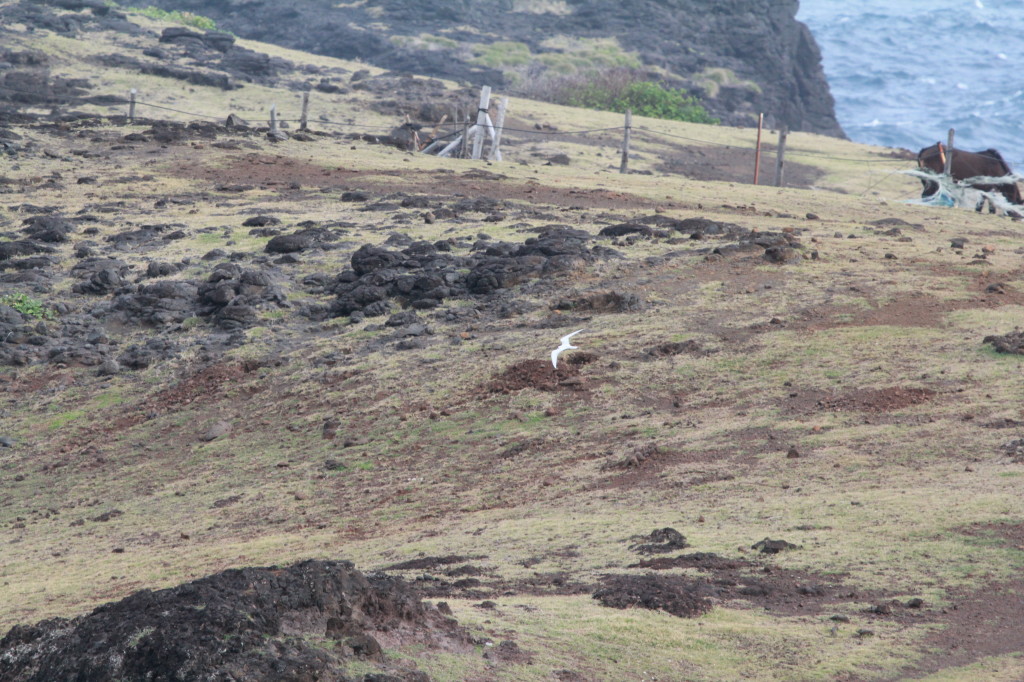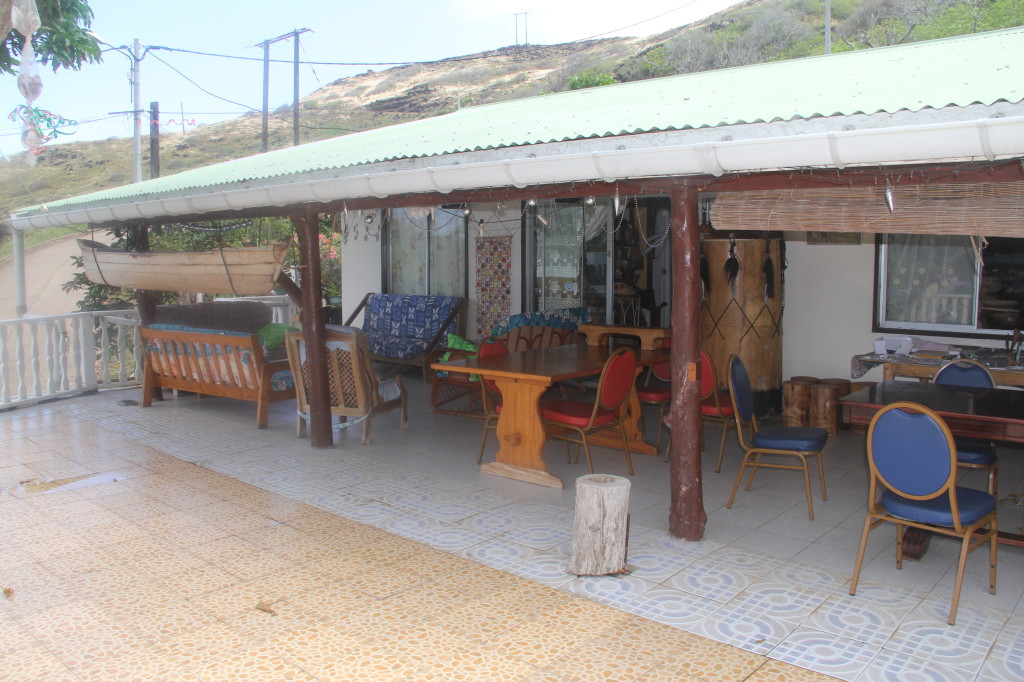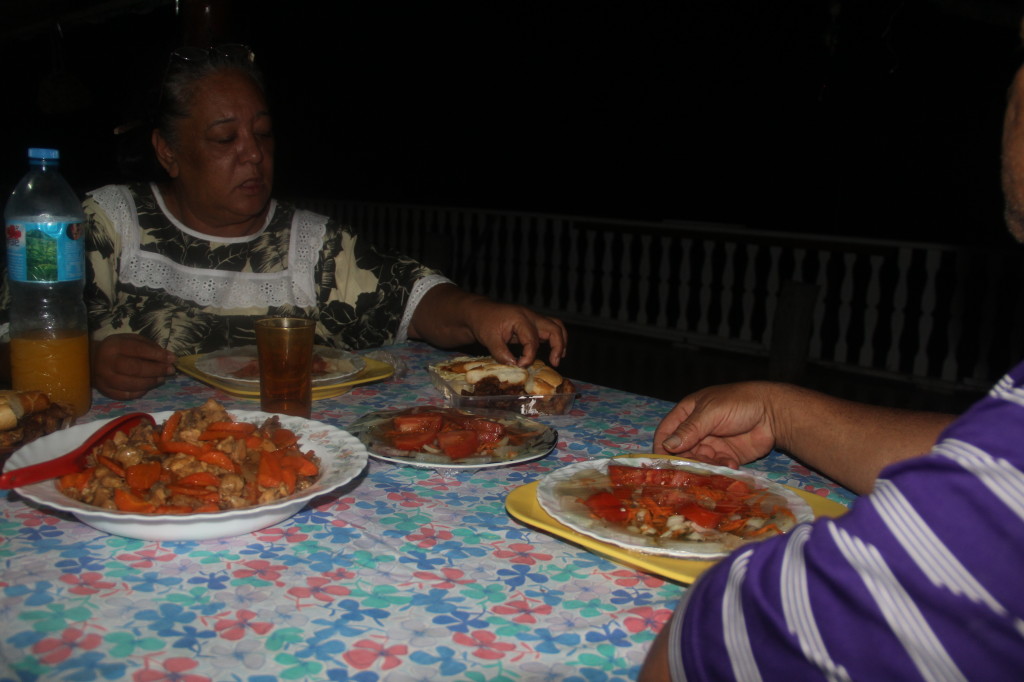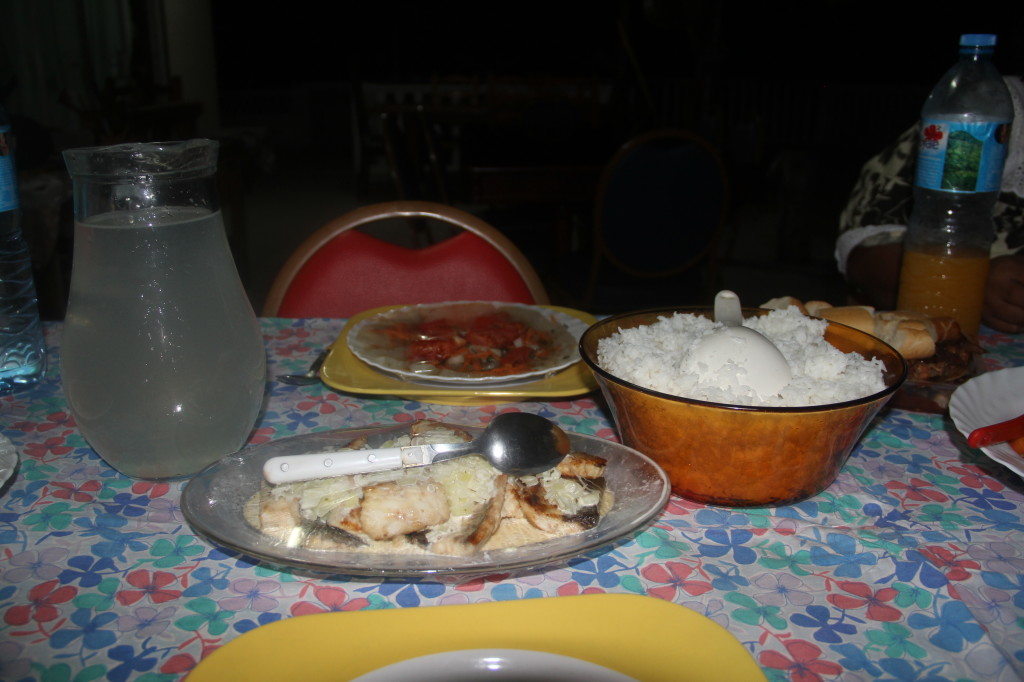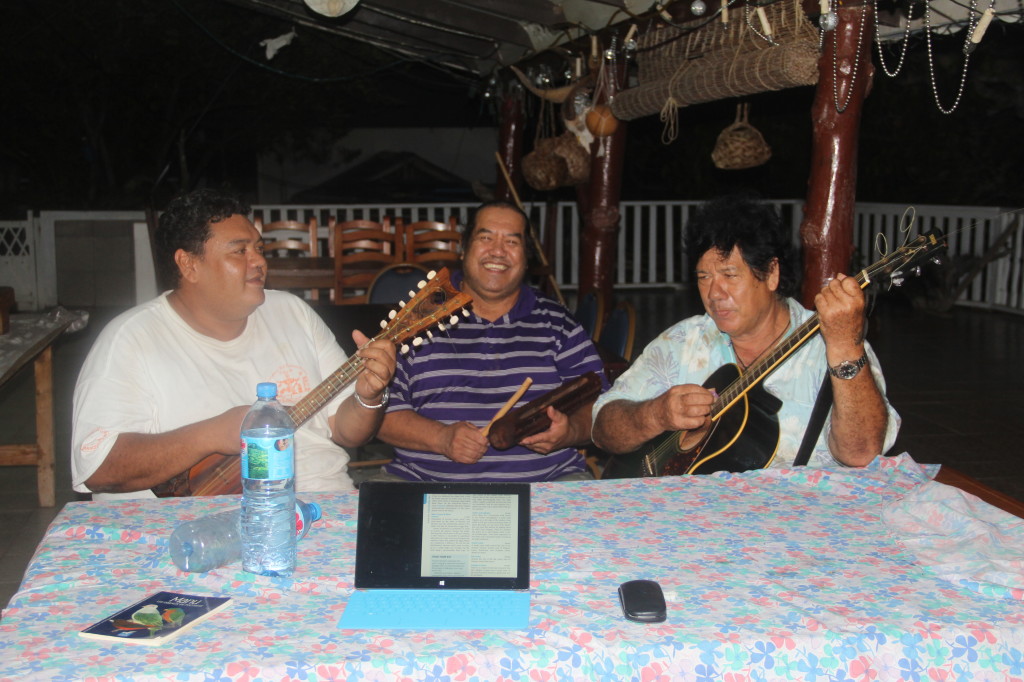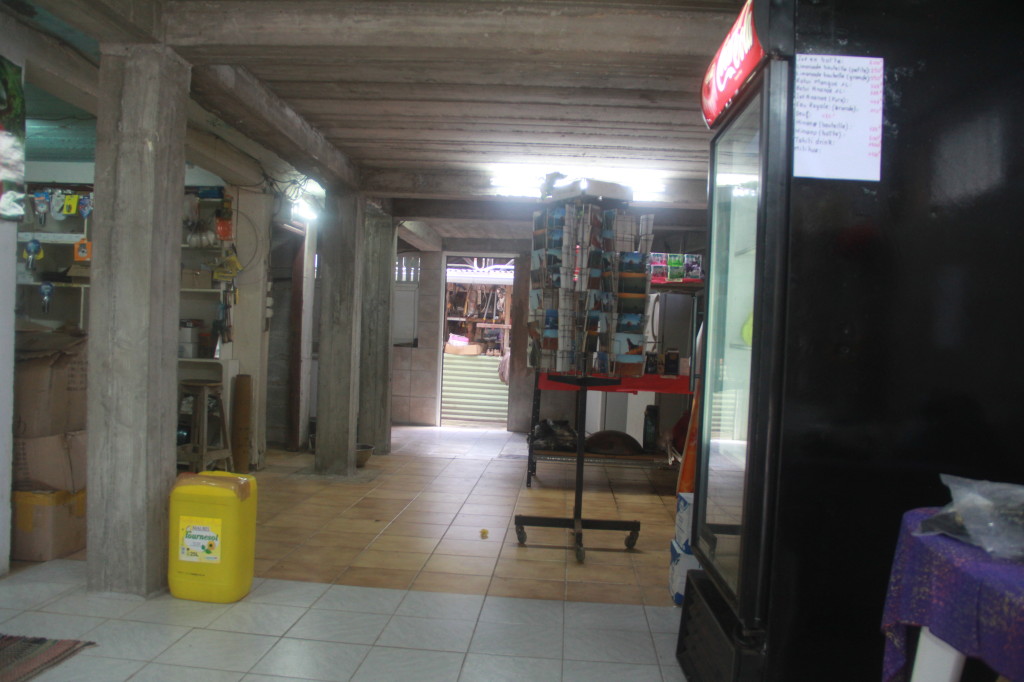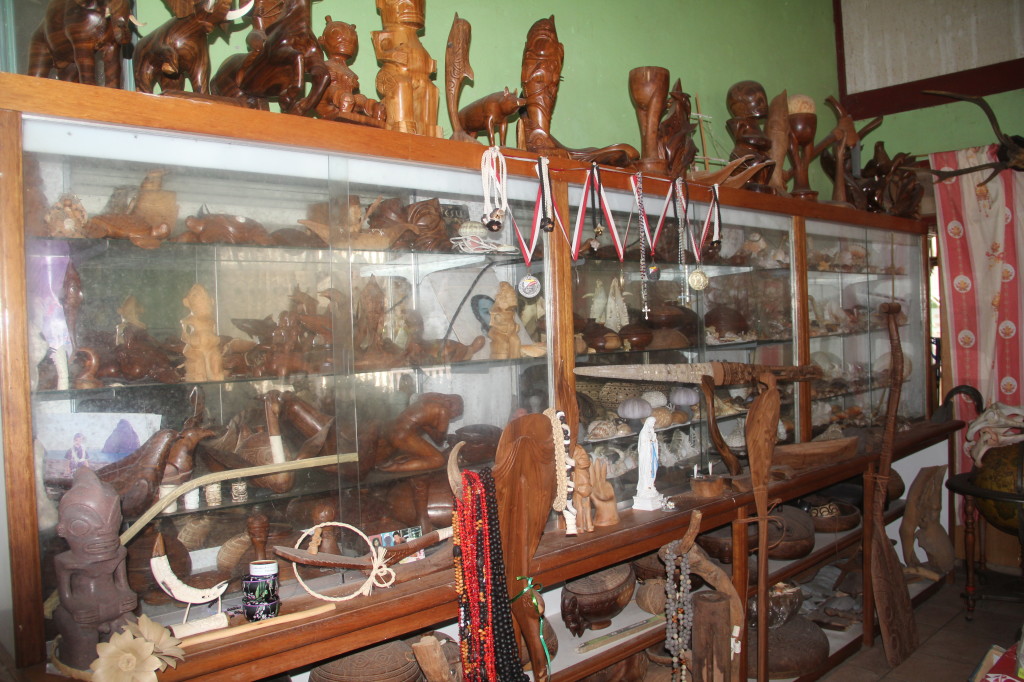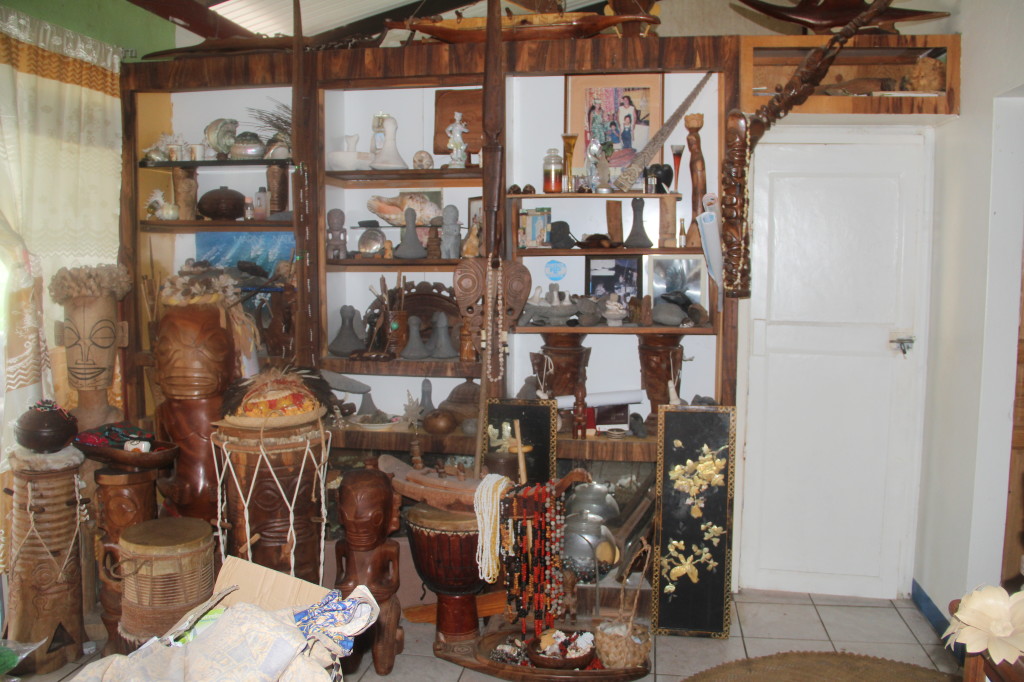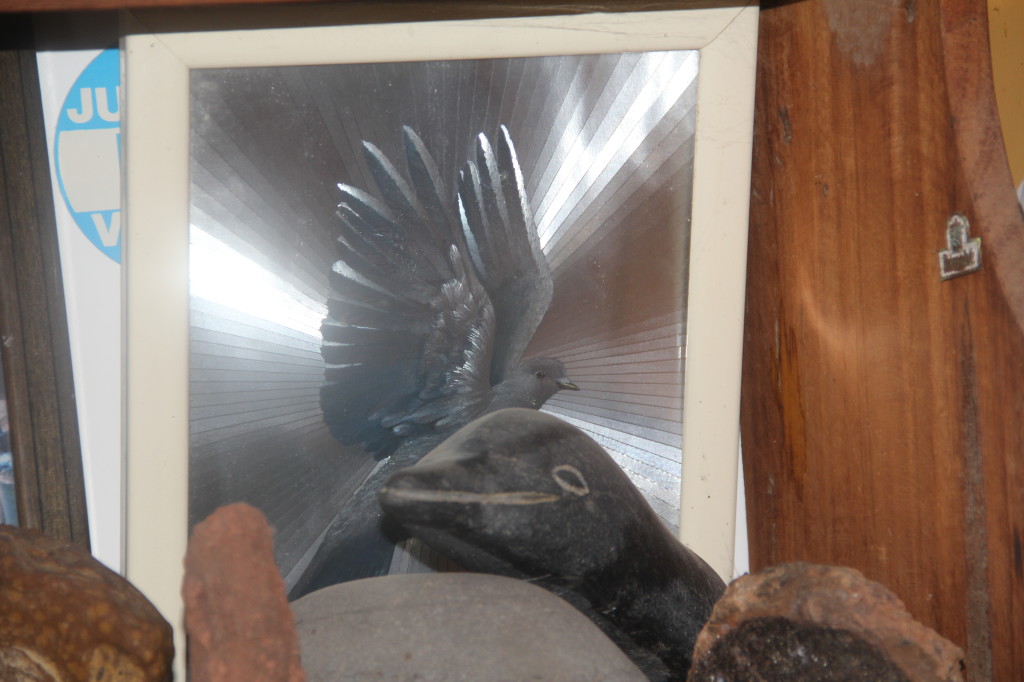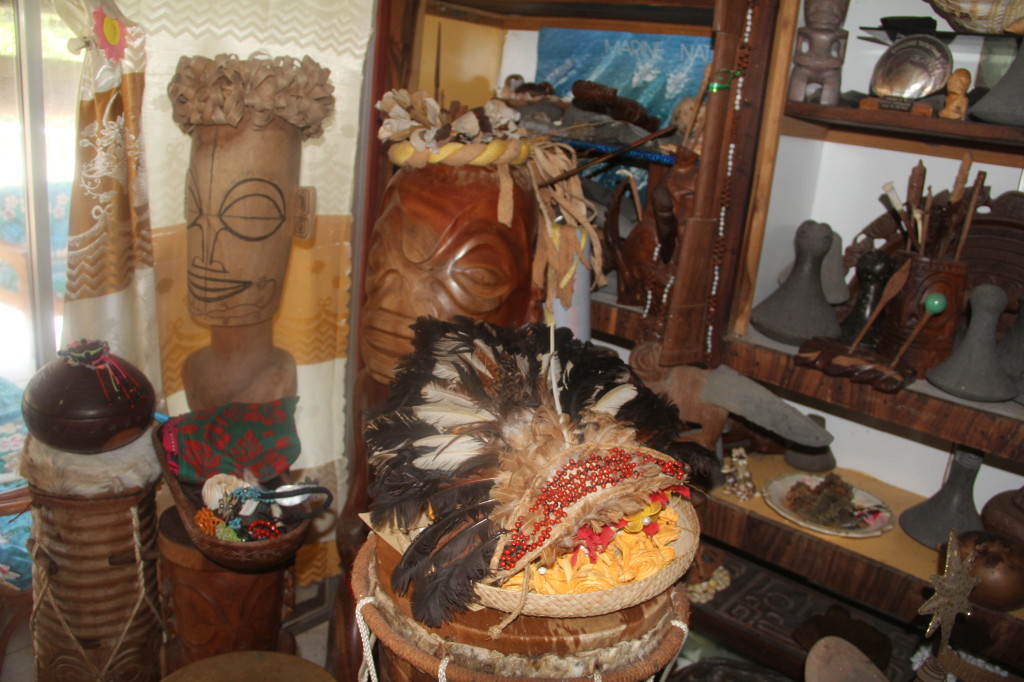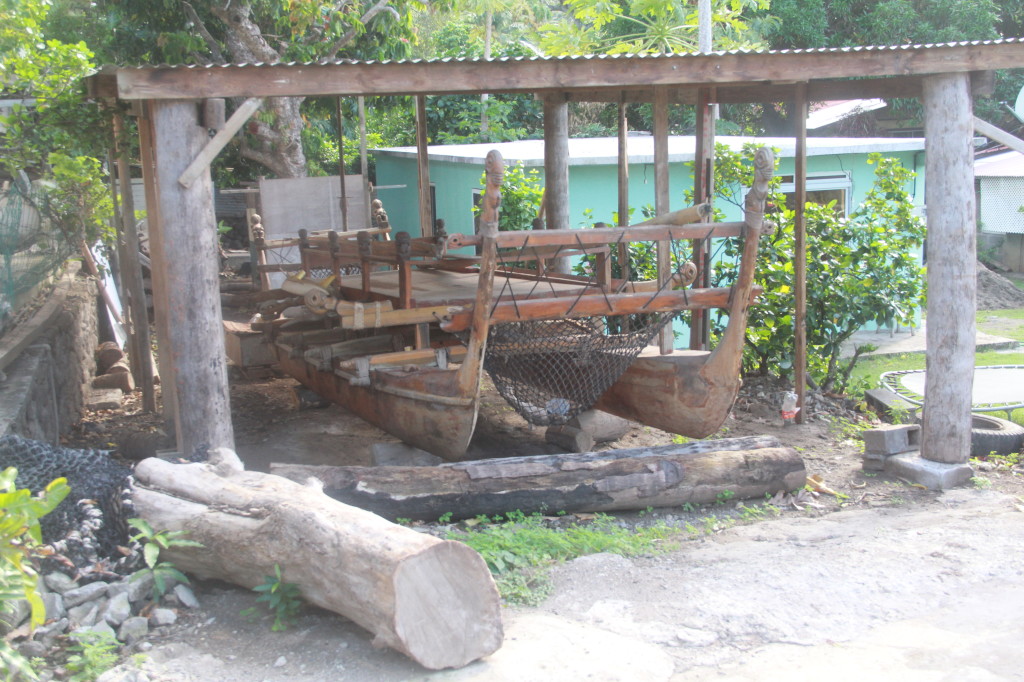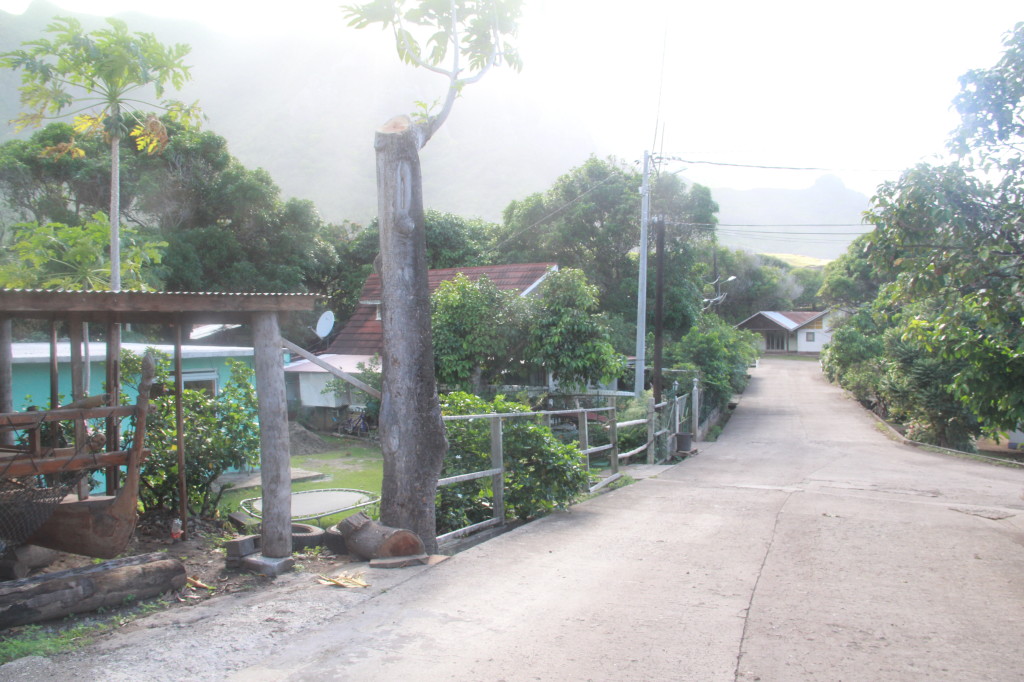Part of responsible eco-tourism is putting as much spend as possible into the local communities and providing employment for them. Fortunately, in Ua Huka, MANU has a superb trained guide who is passionate about conserving the two endemic birds – Ultramarine Lorikeets and Marquesan Monarchs.

Our barefoot guide, Geoffray Sulpice
Geoffray Sulpice is not only an excellent guide who knows his island like the back of his hand and where to find the birds but he also works in biosecurity to keep the dangerous black rat off the island. Black rats have already been responsible for exterminating several species of birds from other Pacific Islands. You can call him direct or ask Maurice (his uncle) to call him. Be sure to specify you want an early start, just after dawn. I didn’t do this and therefore Maurice told Geoffray to come at 8am.
Being able to make a living from this eco-tourism activity allows Geoffray and his sister to keep on preventing any pest infestation of Ua Huka.
Contact number: Geoffray (00 689) 87 34 66 69 / Hinapootu (00 689) 87 92 60 53
So right after breakfast, Geoffray showed up – barefoot! In answer to my questioning glance, he just replied “pas besoin”. Not needed! Maybe HE didn’t need shoes but tourists will need some kind of walking shoe (boots not required) as the path up to his plantation where the birds are is pretty rocky. He will point out the nest boxes he built to help the Pihiti (local term for Ultramarine Lorikeet) breed.


 We got there a bit late but there were still a few birds hanging around. The photos I took very early this morning show when the lorikeets are most active. Meanwhile, he showed us around the plantation and pointed out the fruit trees. Some lorikeets appeared to resting after a big breakfast.
We got there a bit late but there were still a few birds hanging around. The photos I took very early this morning show when the lorikeets are most active. Meanwhile, he showed us around the plantation and pointed out the fruit trees. Some lorikeets appeared to resting after a big breakfast.
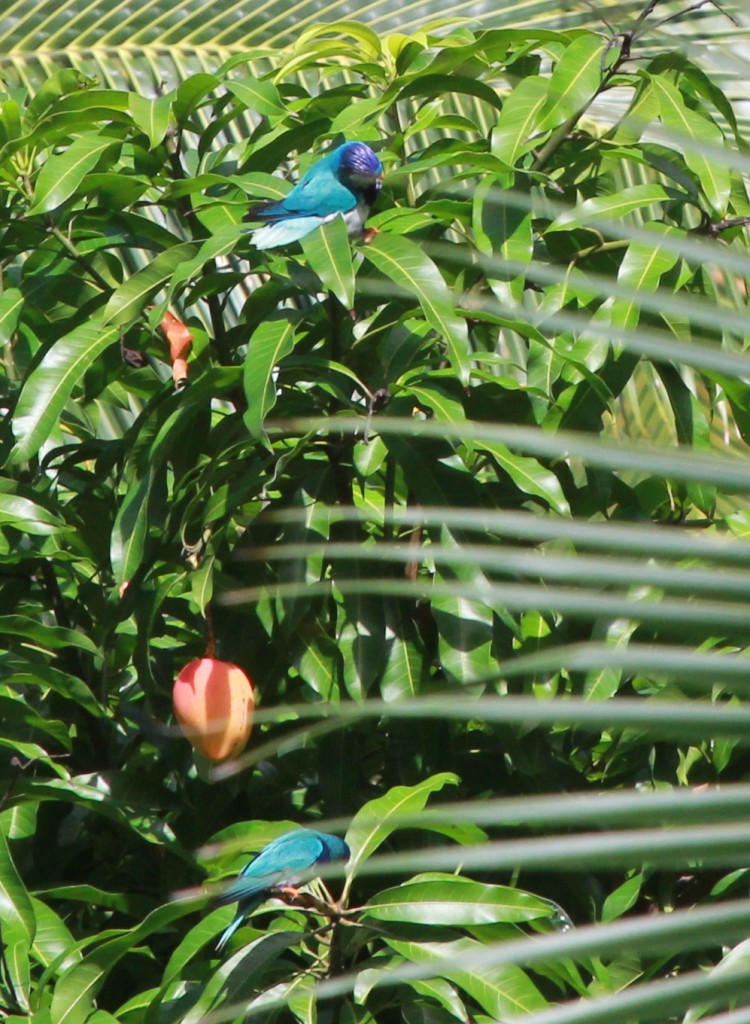
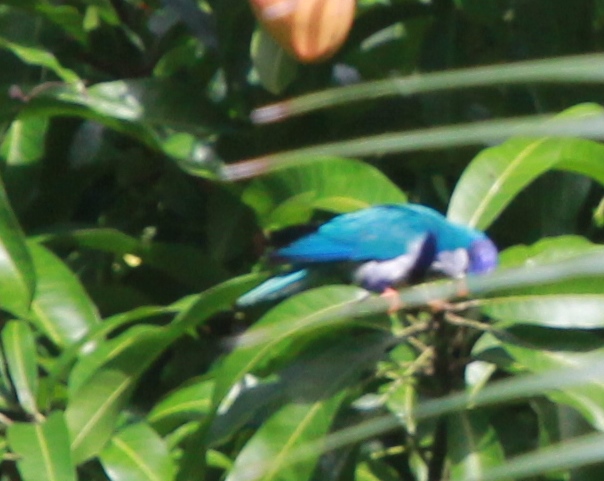
 Others were in a more playful mood!
Others were in a more playful mood!
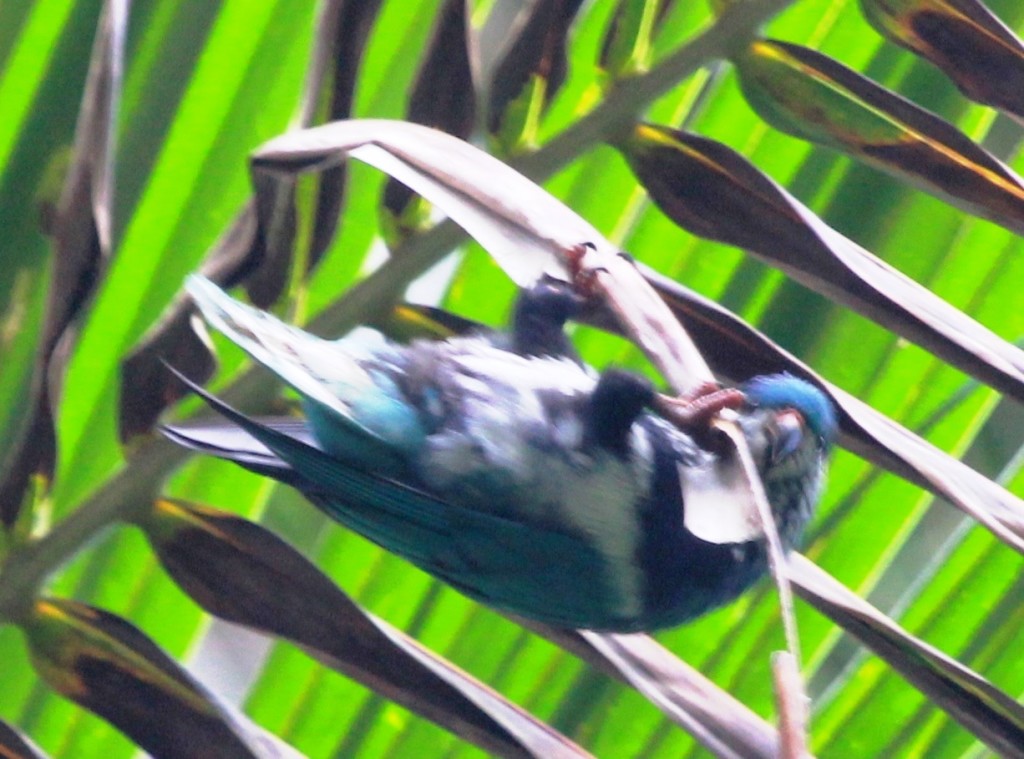
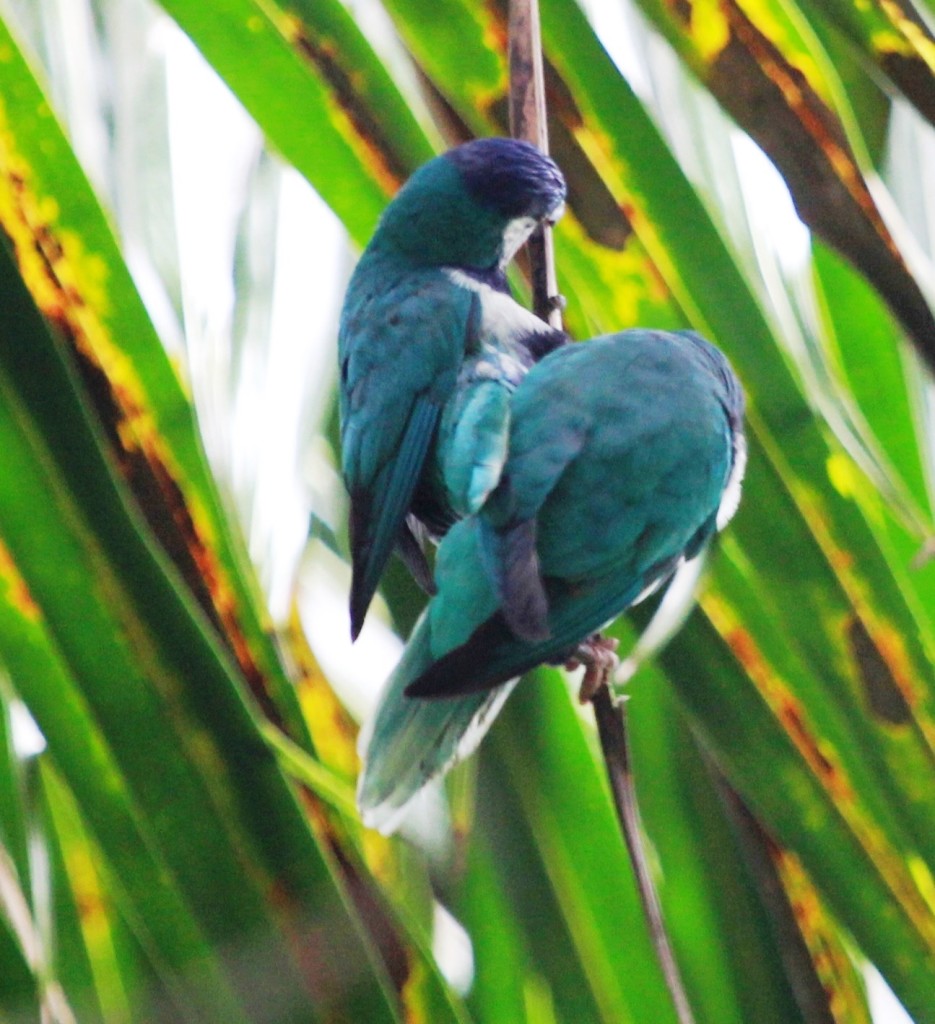
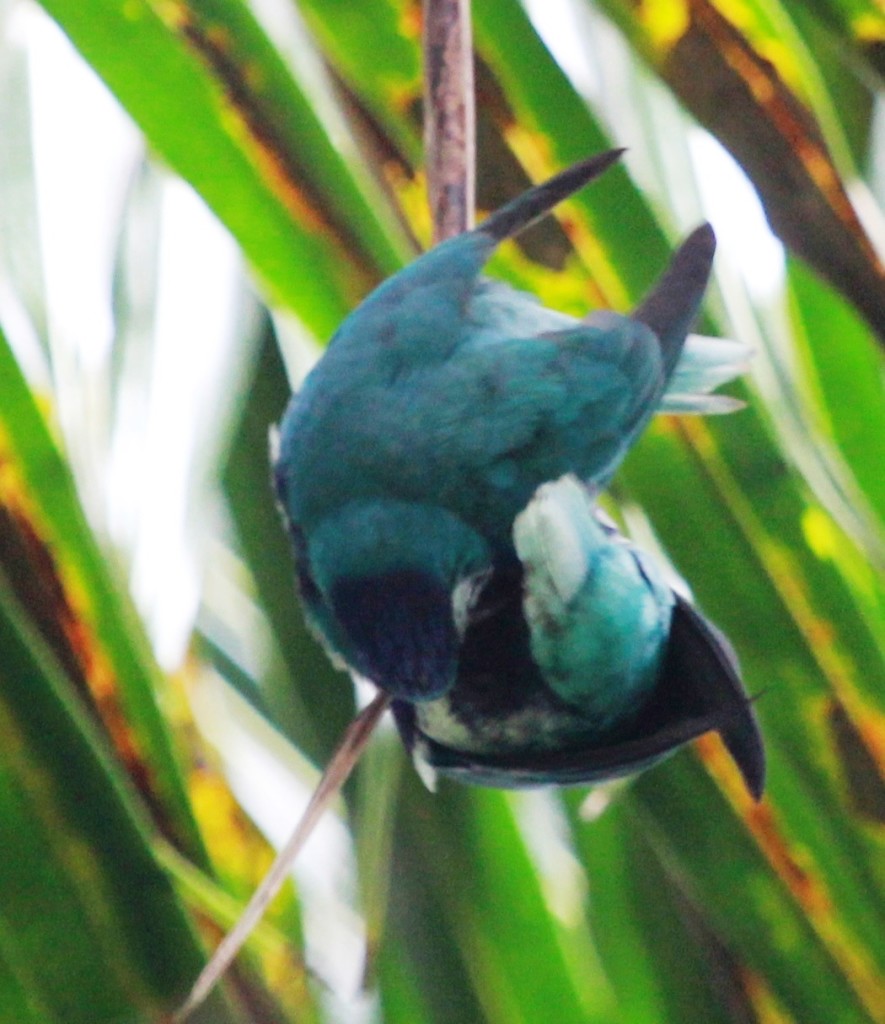
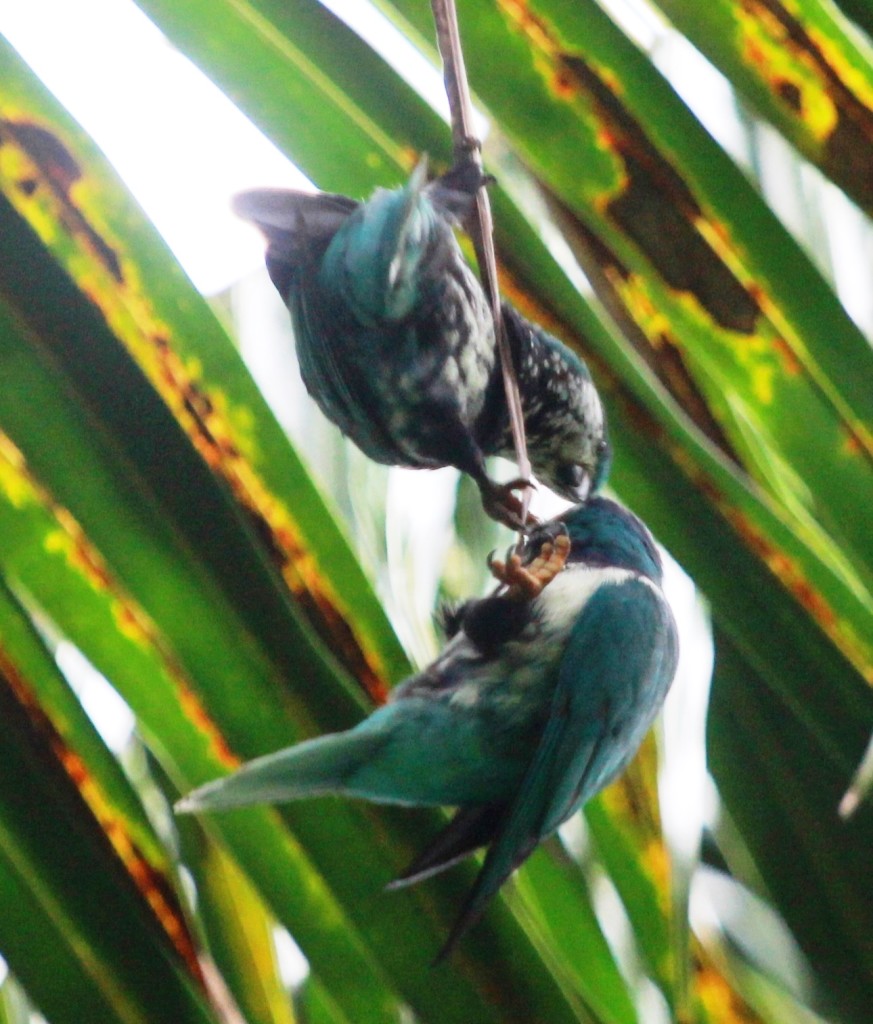
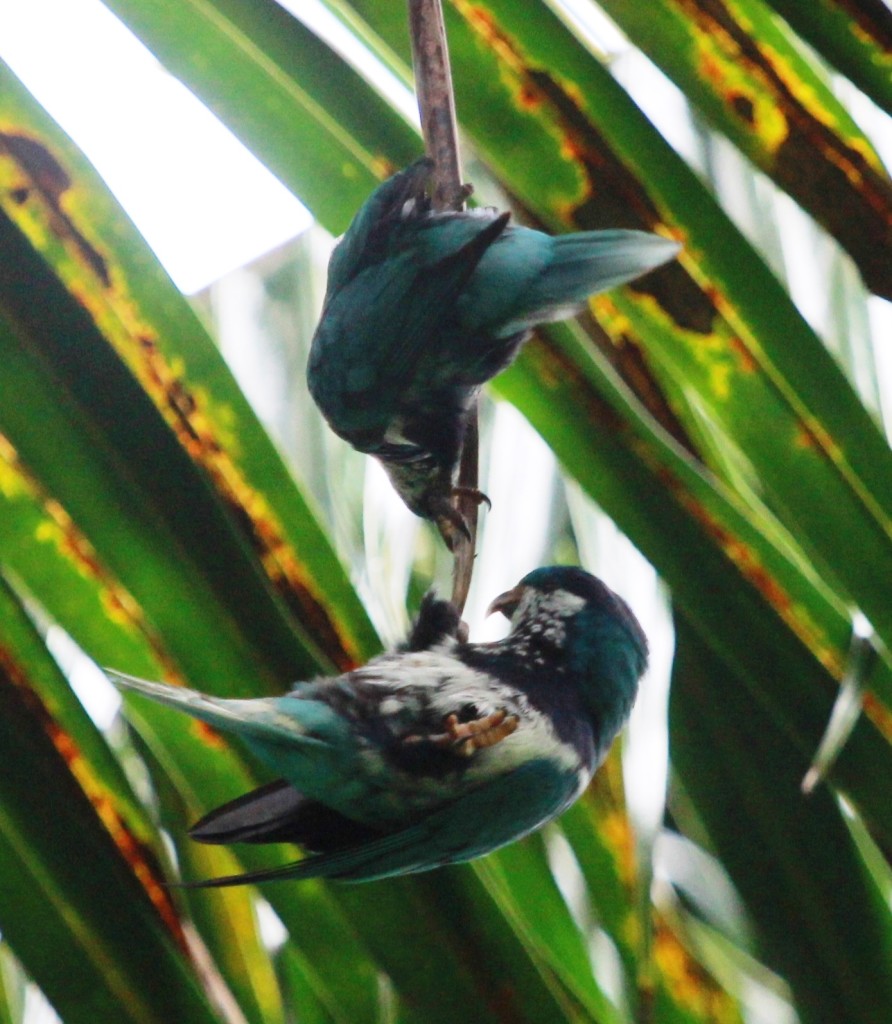 The light was pretty bad as it was overcast and the birds were mostly in the shade. The sun came out a bit later and I was able to get these shots of a Pihiti munching on a flower.
The light was pretty bad as it was overcast and the birds were mostly in the shade. The sun came out a bit later and I was able to get these shots of a Pihiti munching on a flower.
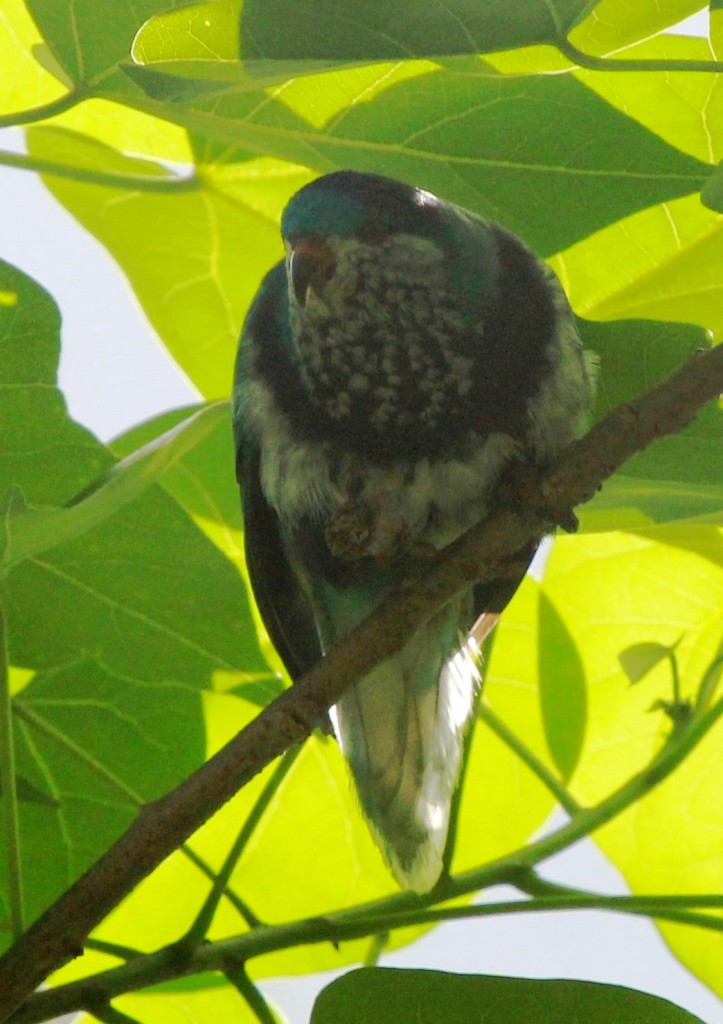
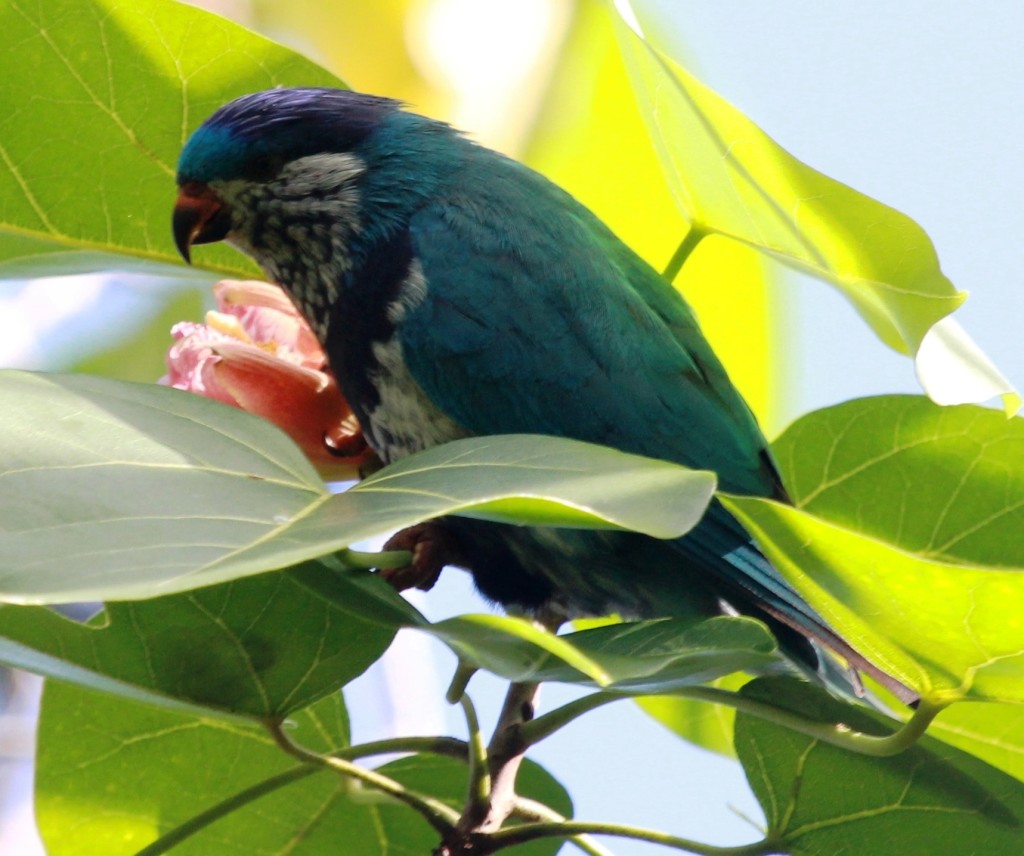
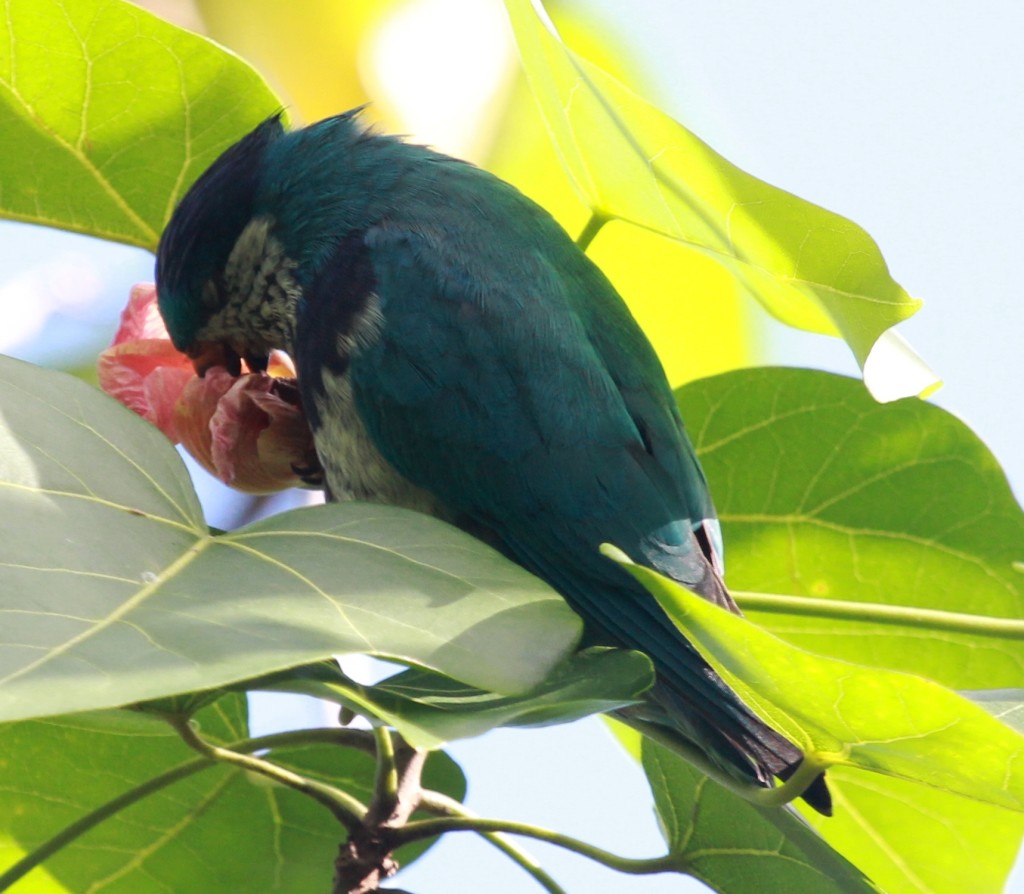
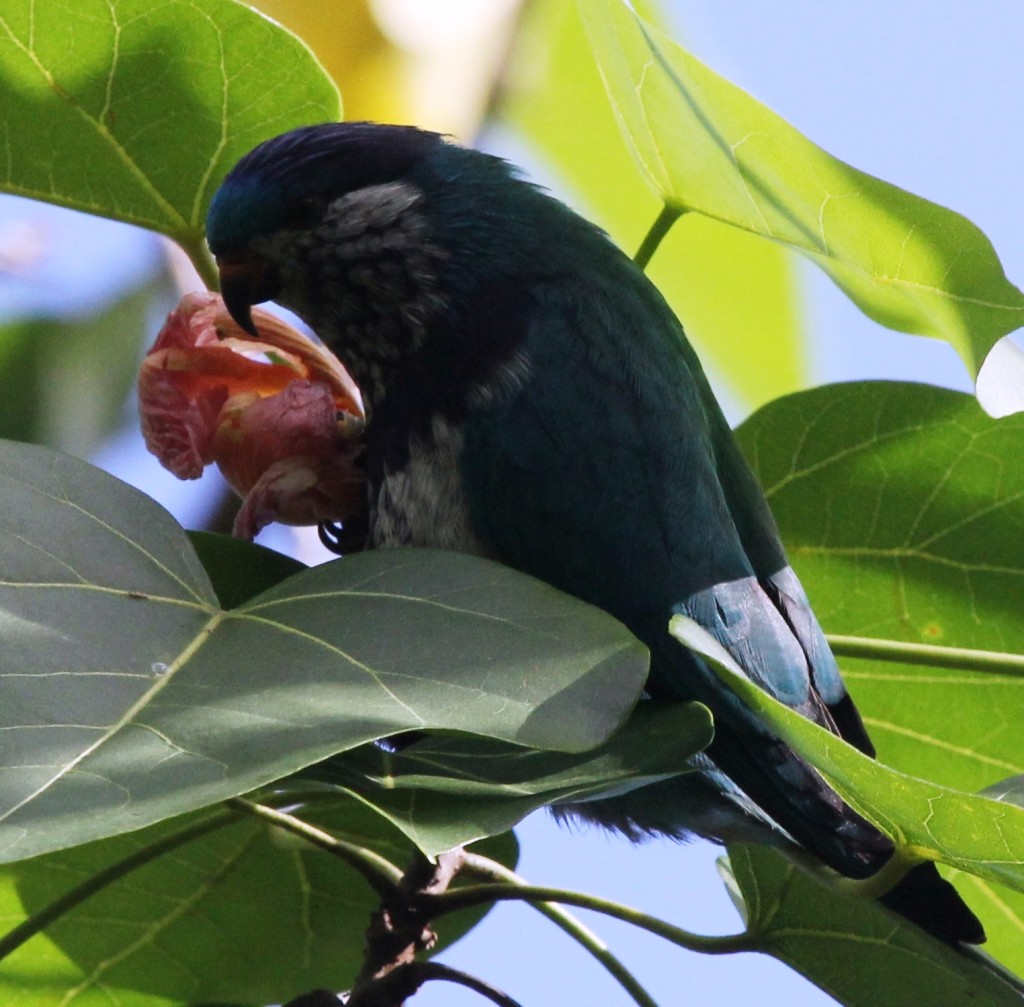
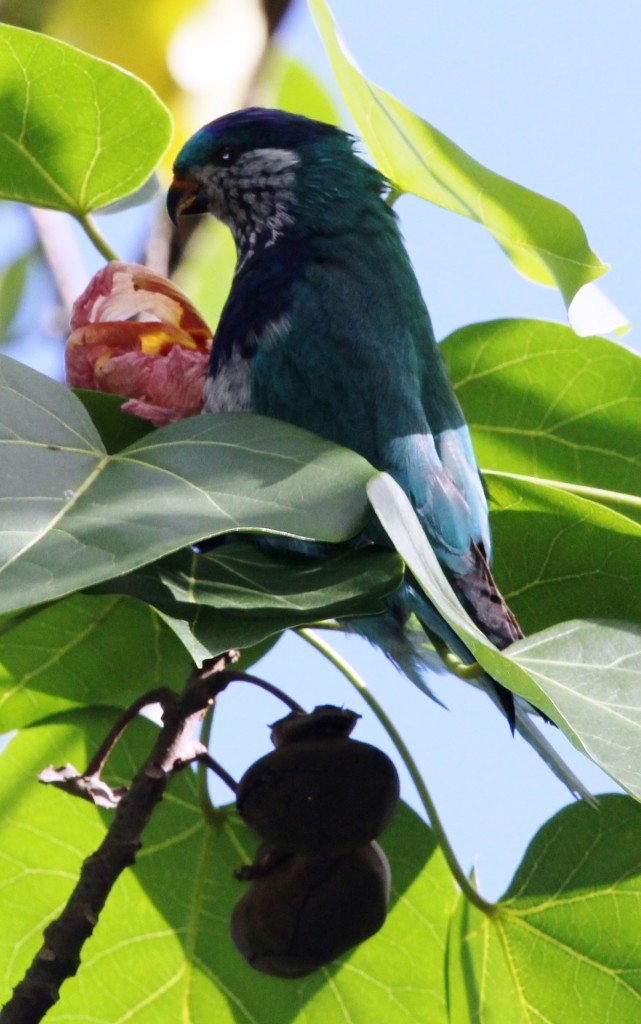 Other birds seen in the plantation include the Marquesan Monarch, local roosters and White-capped Fruit Doves.
Other birds seen in the plantation include the Marquesan Monarch, local roosters and White-capped Fruit Doves.
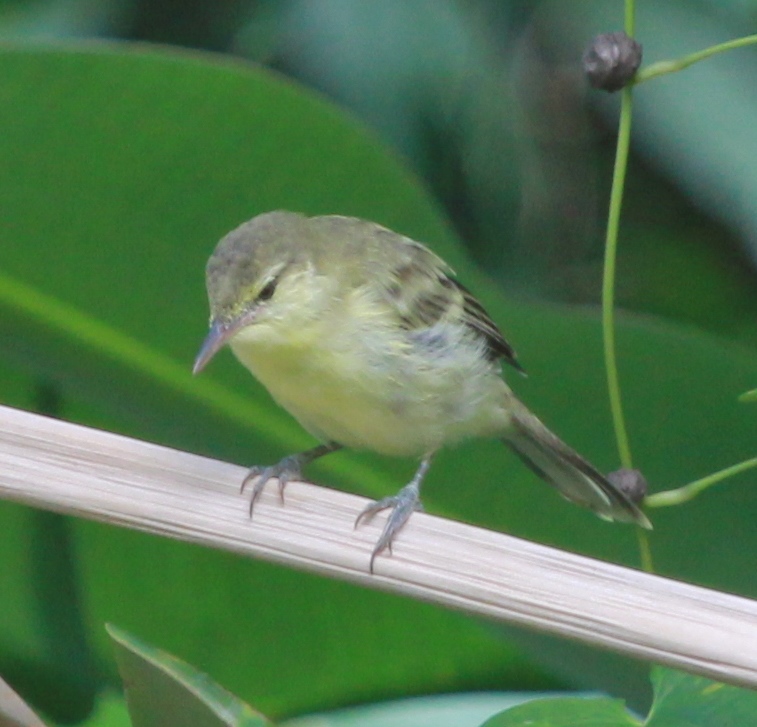



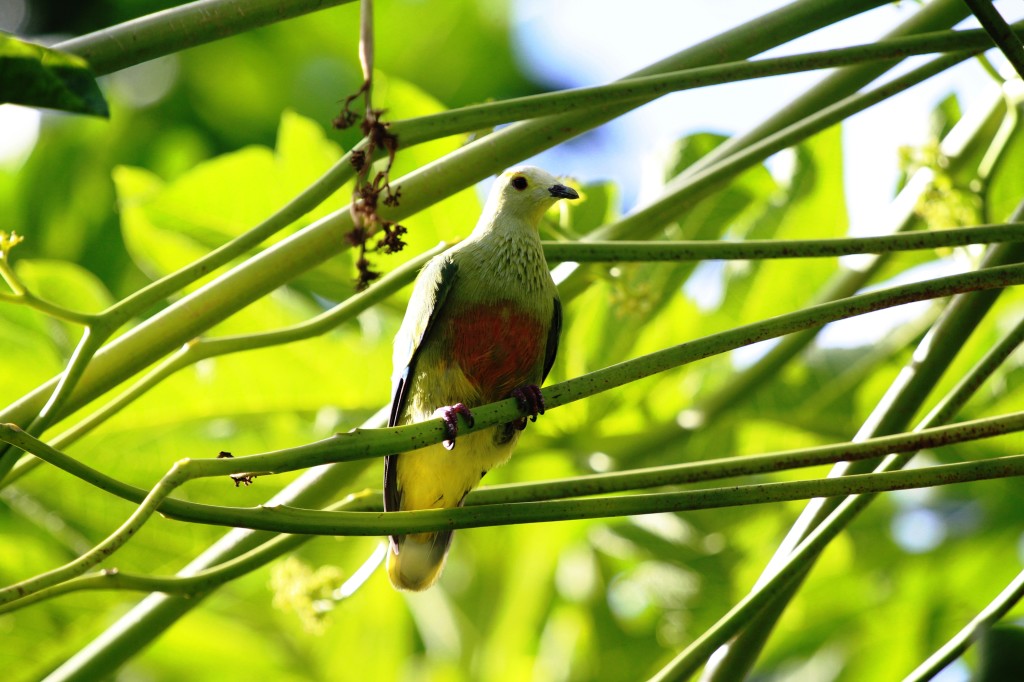
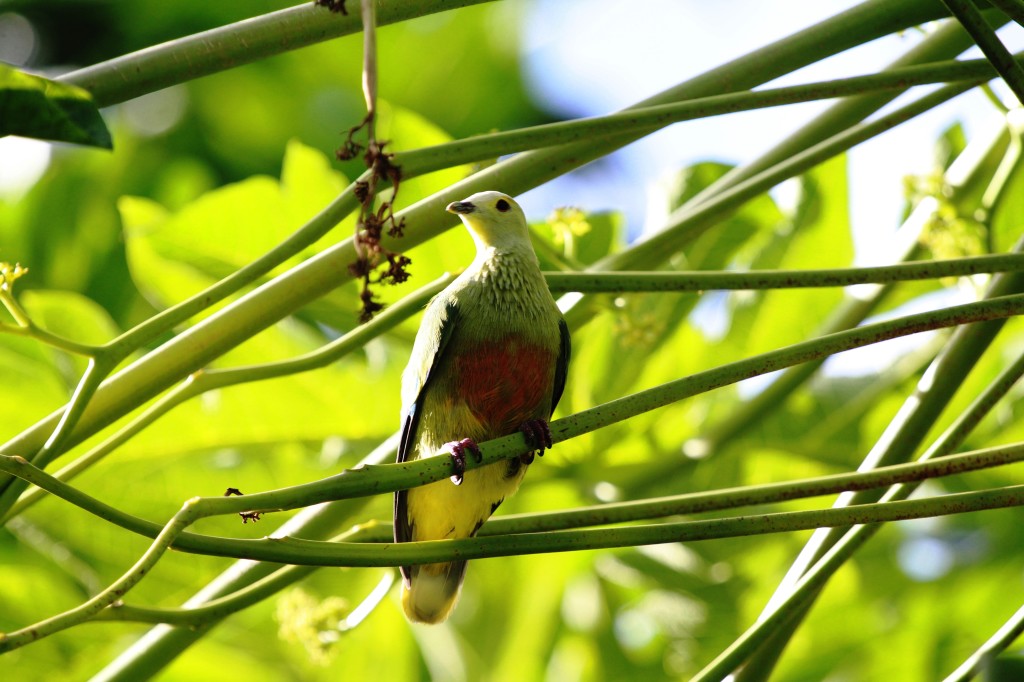 Geoffray husked a coconut for us to drink.
Geoffray husked a coconut for us to drink.

 By mid-afternoon, most tourists would have been happy with these sightings and gone home but I was still hoping to get better shots of the lorikeets in the sun. My patience (and stubbornness) was to be rewarded. Around 3:30-ish, some hungry Pihiti flew in and went to town on the banana flowers! This let me get closer to them without disturbing them. They don’t eat the actual bananas, they eat the nectar from the flower at the bottom of the stalk. It’s pretty cool to see how they climb inside the flower!
By mid-afternoon, most tourists would have been happy with these sightings and gone home but I was still hoping to get better shots of the lorikeets in the sun. My patience (and stubbornness) was to be rewarded. Around 3:30-ish, some hungry Pihiti flew in and went to town on the banana flowers! This let me get closer to them without disturbing them. They don’t eat the actual bananas, they eat the nectar from the flower at the bottom of the stalk. It’s pretty cool to see how they climb inside the flower!
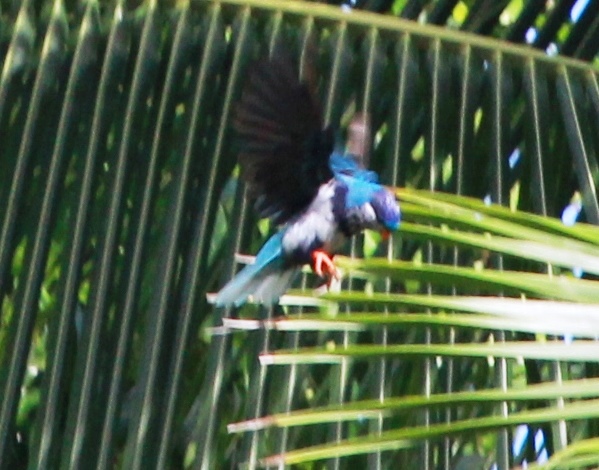
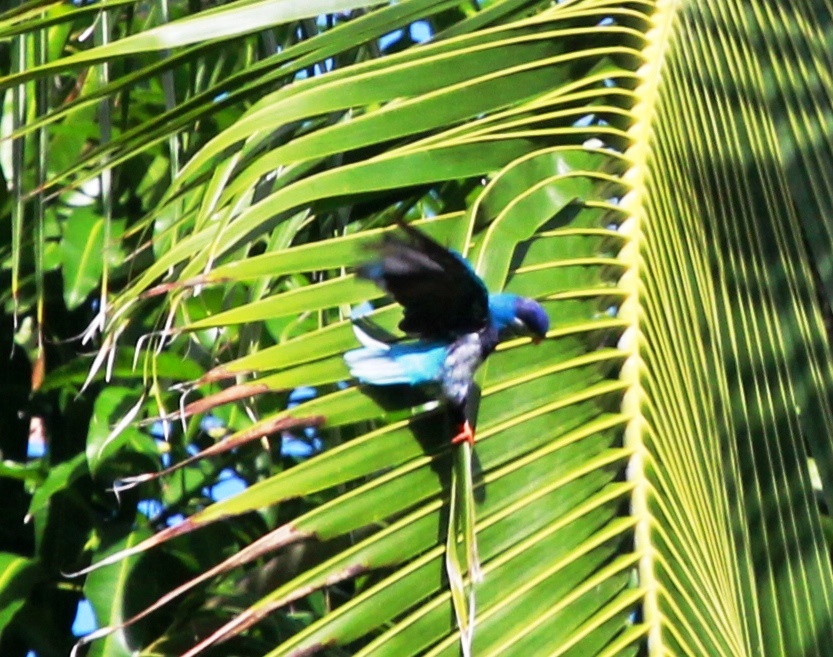
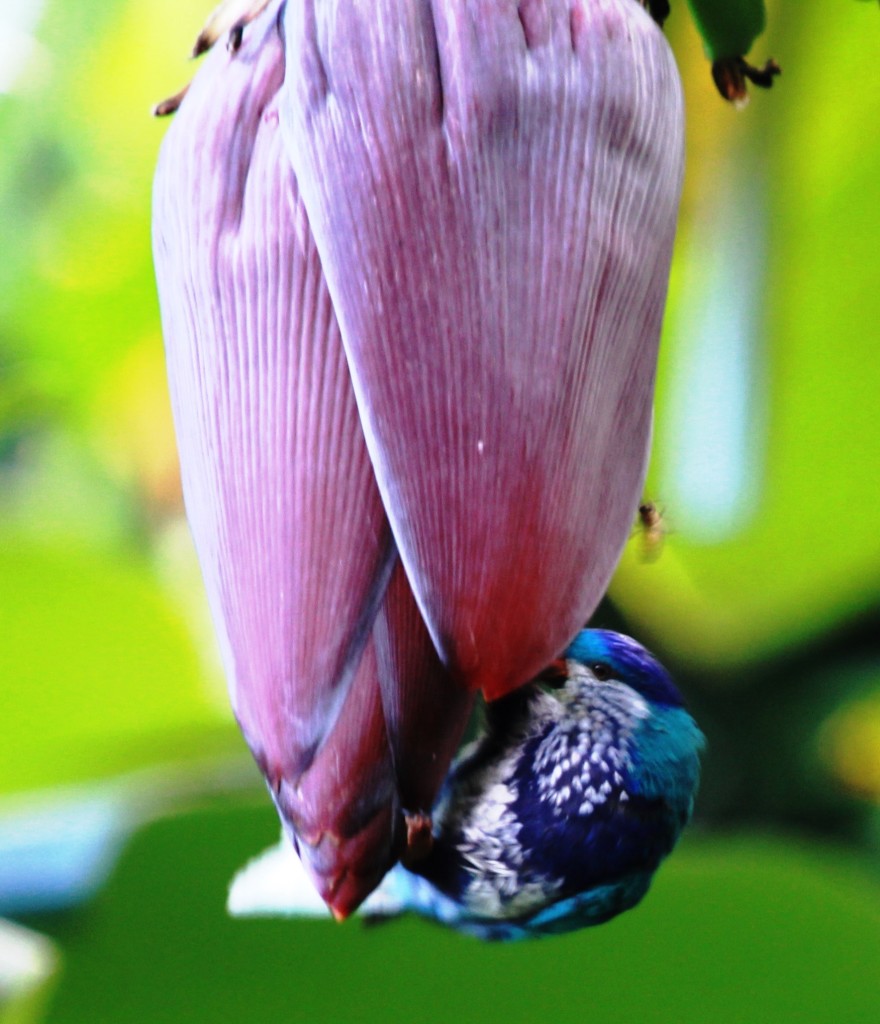
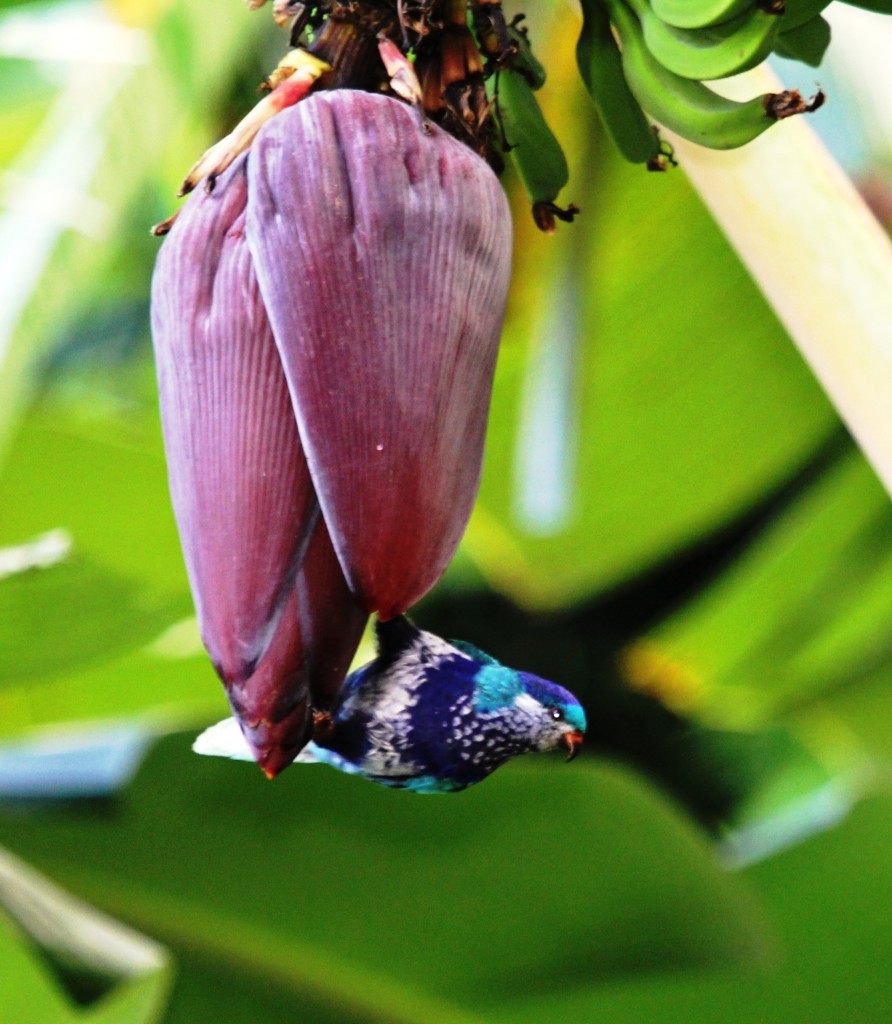
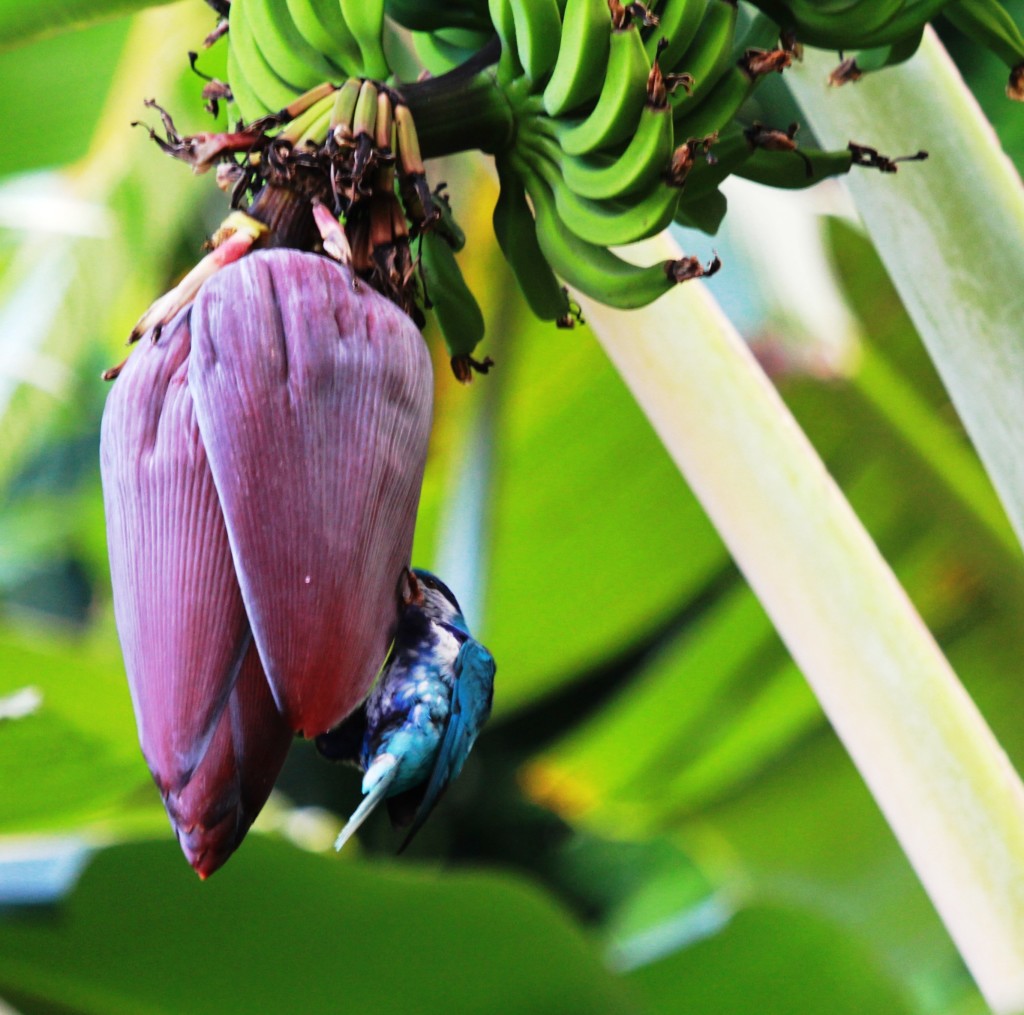
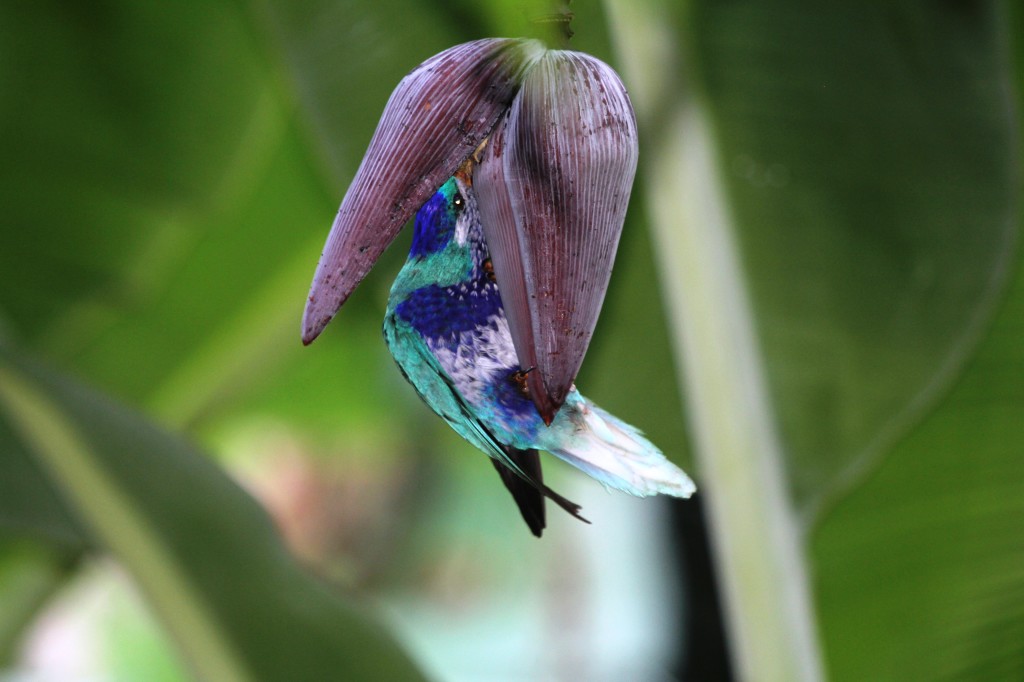
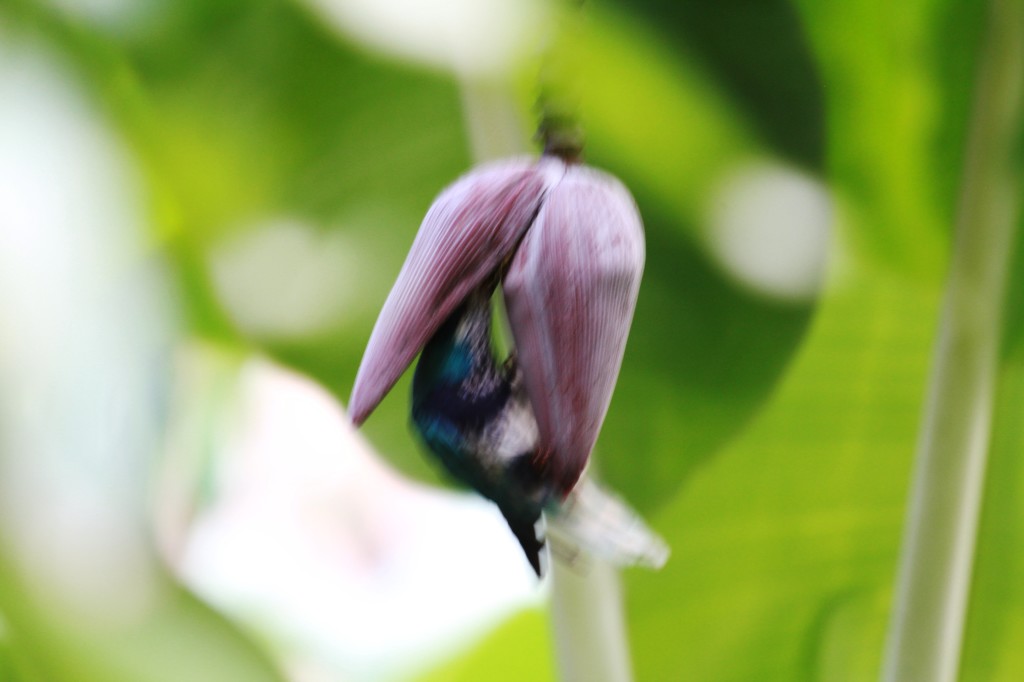
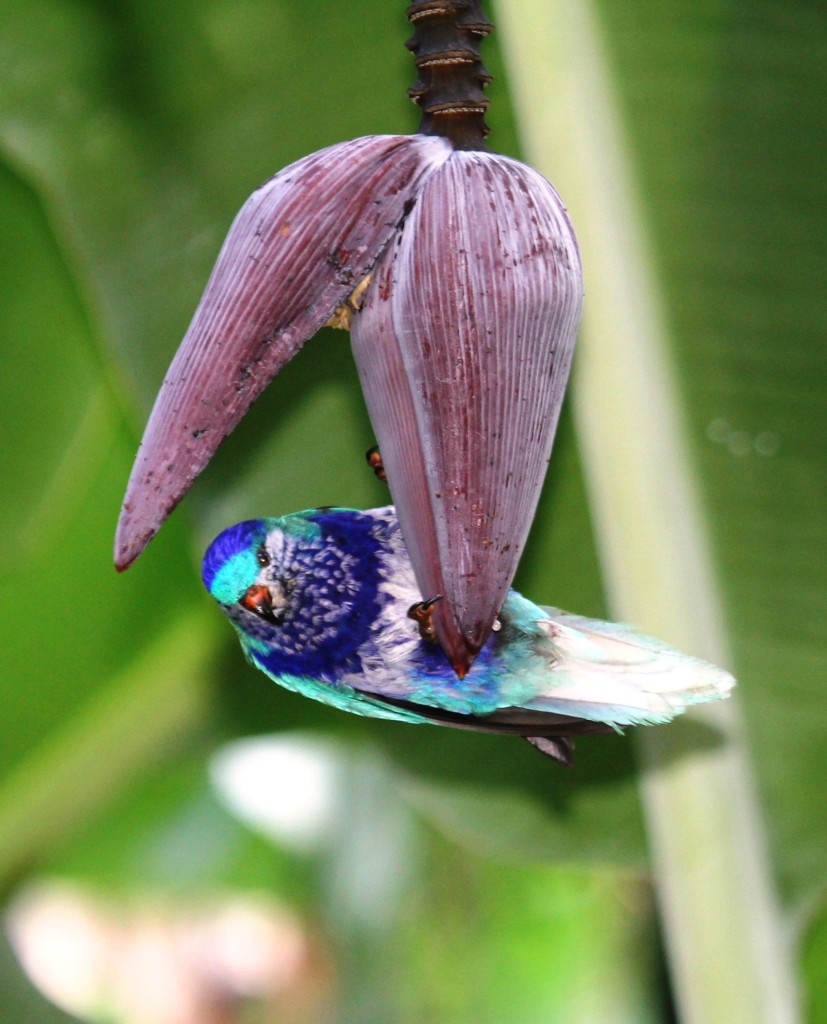
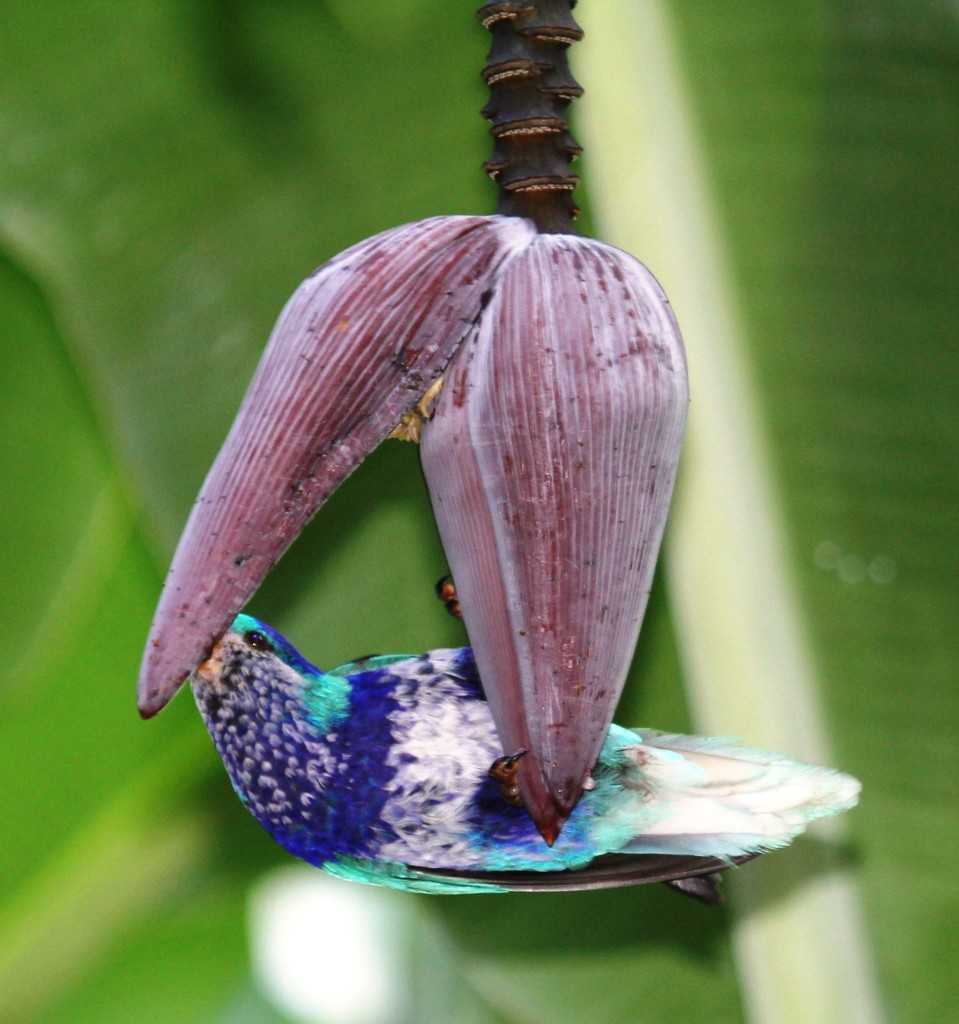
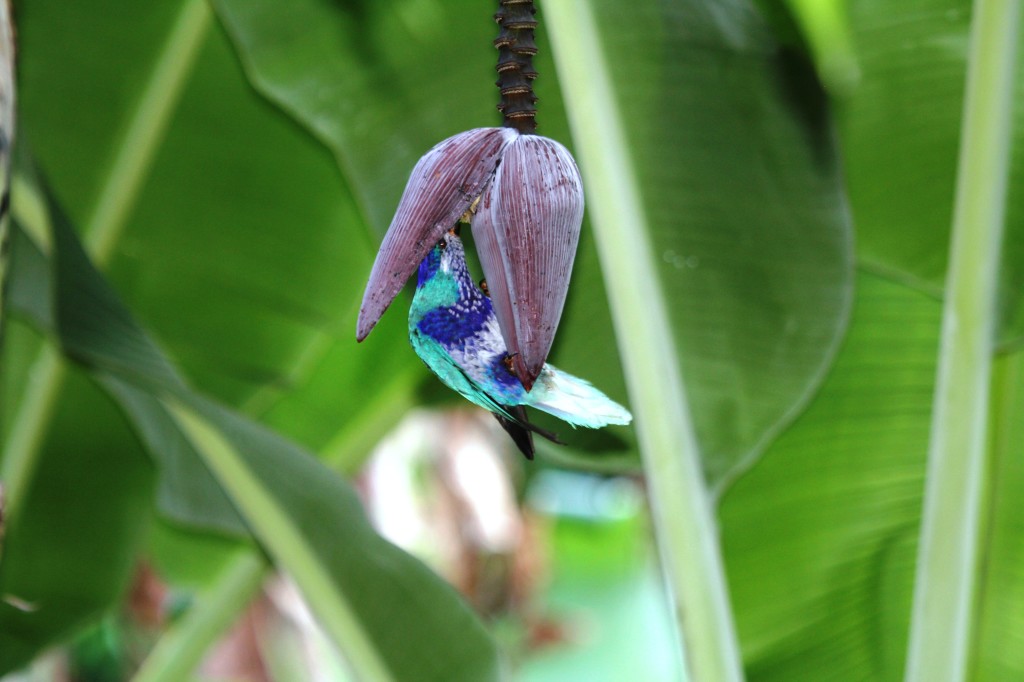 Finally I was happy with my photos! We all walked back down the hill. The trail ended right in front of the bungalows we were staying at.
Finally I was happy with my photos! We all walked back down the hill. The trail ended right in front of the bungalows we were staying at.



 Geoffray was an excellent guide and I highly recommend hiring him if you will be in Ua Huka. His fee is fixed at 2500 XPF per person (June 2014) which is pretty reasonable. He doesn’t speak English but he knows how to point out the birds! I can speak basic French so we got by. If the Aranui cruise ship is in port, he won’t be available due to his biosecurity duties so if you are only staying for one day, check the cruise schedule on their website. You could probably get by with a 2 day stay to make sure you see the lorikeets but I was happy we stayed 3 as we had one day with the ship in town and you never know how the weather may go!
Geoffray was an excellent guide and I highly recommend hiring him if you will be in Ua Huka. His fee is fixed at 2500 XPF per person (June 2014) which is pretty reasonable. He doesn’t speak English but he knows how to point out the birds! I can speak basic French so we got by. If the Aranui cruise ship is in port, he won’t be available due to his biosecurity duties so if you are only staying for one day, check the cruise schedule on their website. You could probably get by with a 2 day stay to make sure you see the lorikeets but I was happy we stayed 3 as we had one day with the ship in town and you never know how the weather may go!



